Xin Nian Kuai Le (Happy New Year!)
Last week an ISB parent invited me to join her to see one of the locations of the Beijing Biennial Art Show (there are three). This location is in an old department store that opened around 1960 where only foreign currency could be spent – which regular Chinese people couldn’t get their hands on. Apparently regular Chinese people would go in and be astonished at all the colorful clothes, the appliances and other foreign conveniences they had never seen before. More recently the department store has been struggling, there was talk of plowing it down. There are still a couple floors selling some goods and they just opened a couple floors for the Biennial. A number of curators had areas they curated. The show was really nice to see – a lot of really interesting work. Sadly the show was very empty – hopefully that was because it was a week day. Unfortunately I didn’t take many pictures.
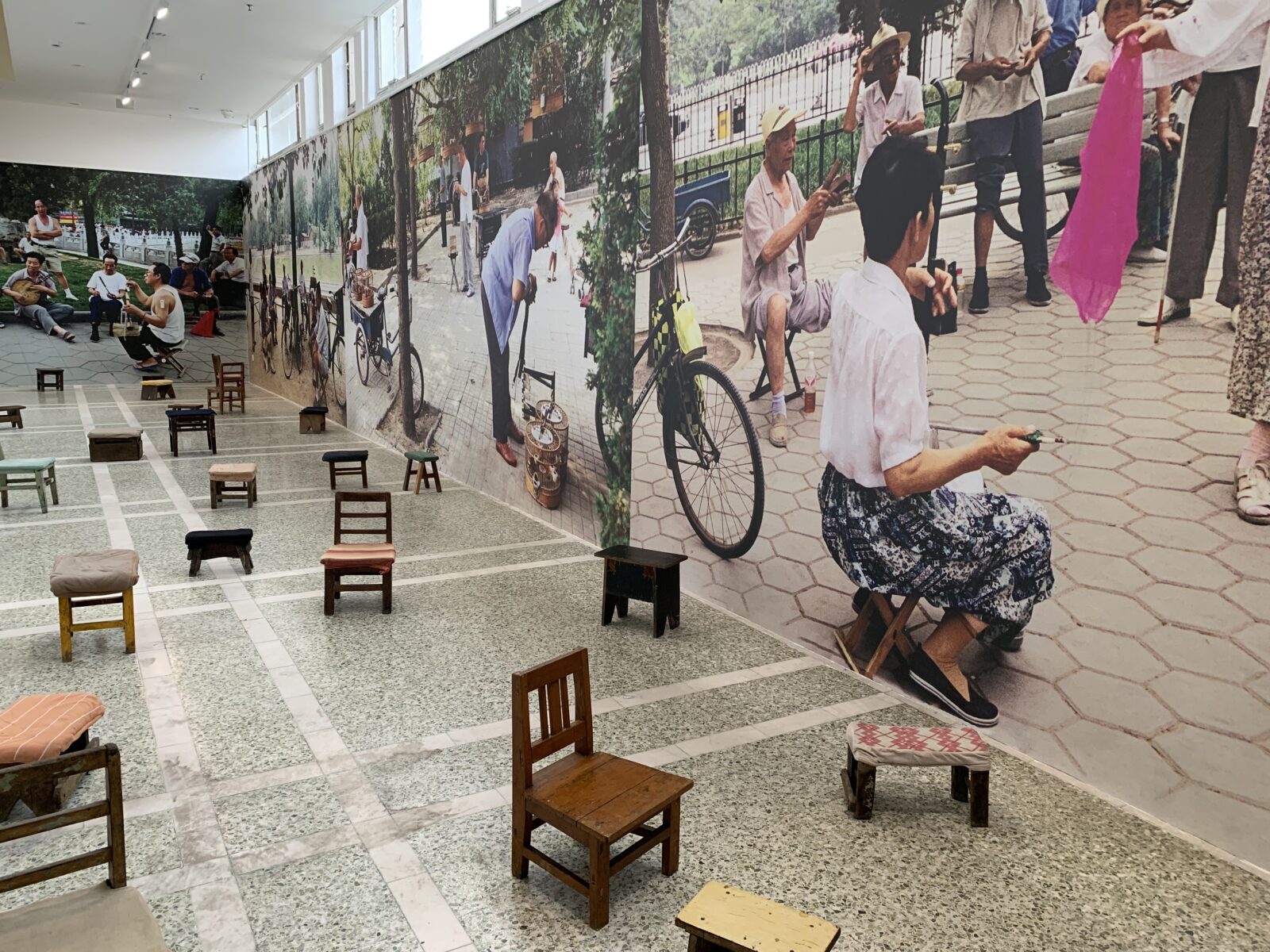
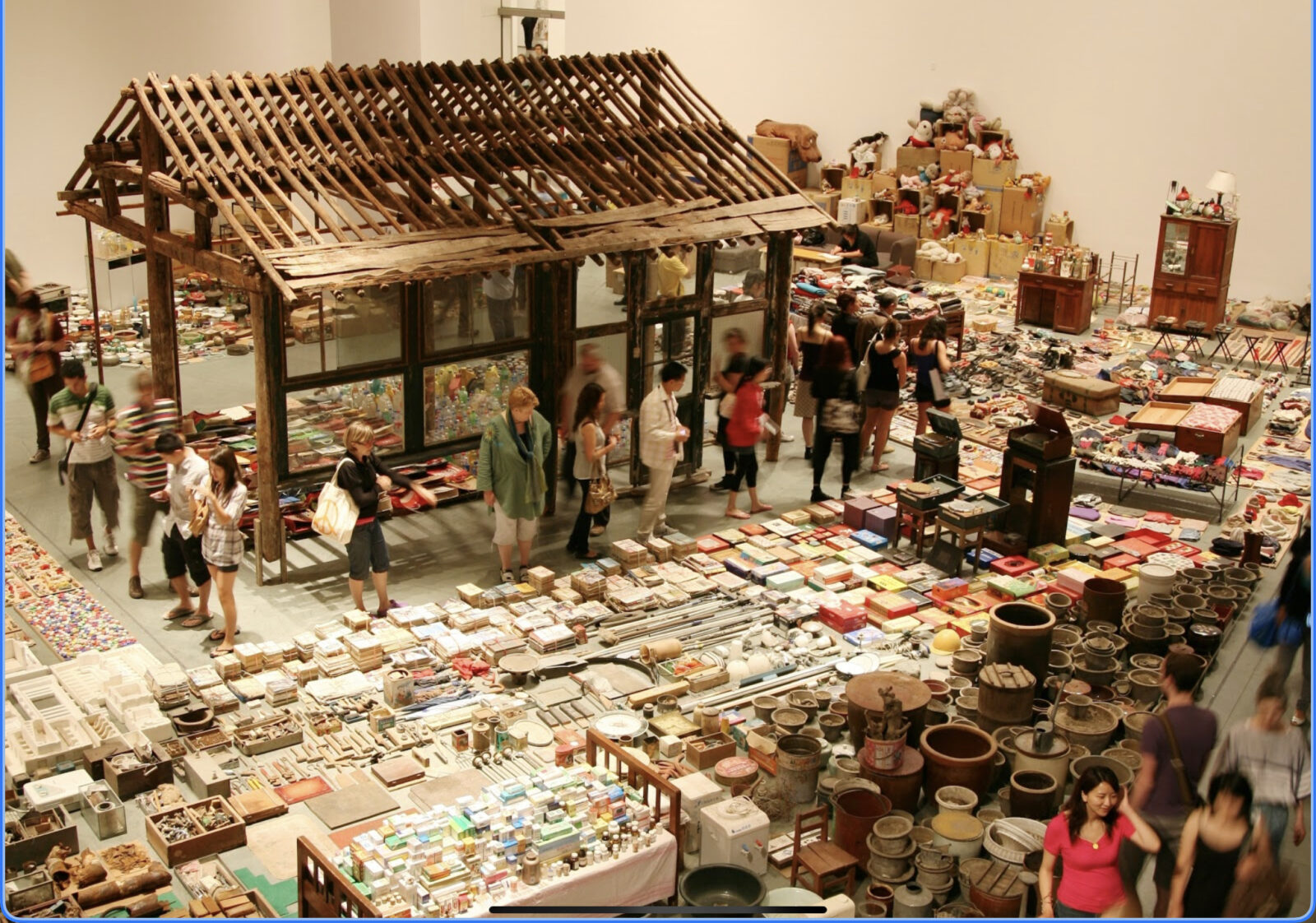
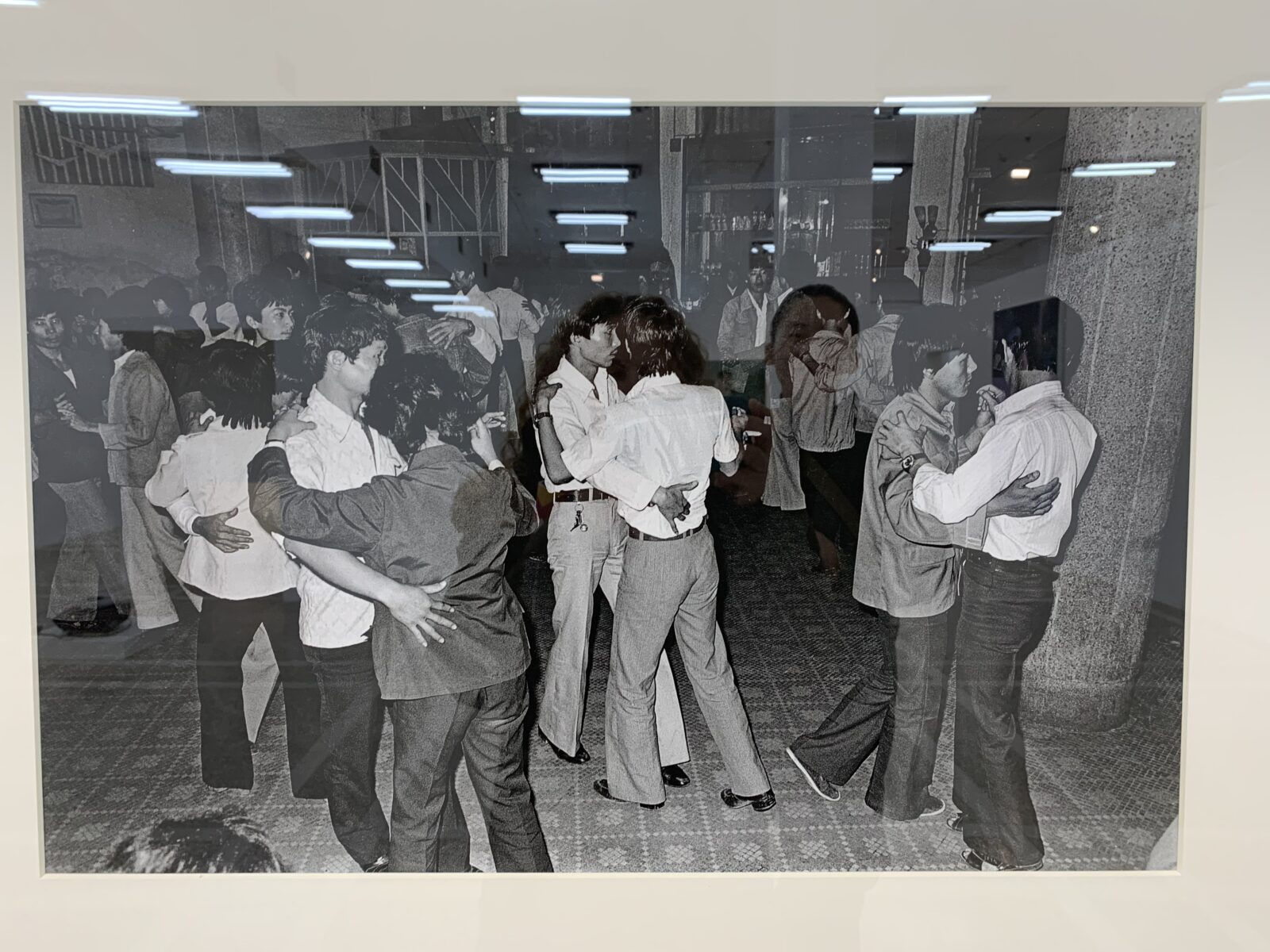
There was also a beautiful installation by Tan Jing where the tiles crack and break under the viewers feet, giving a sense of walking through dusty memories.
There were a couple pieces by Xin Yunpeng about pingpong. I especially liked a video piece with the sounds of the game and a break with the referee’s eyes.
Trying to out run the Chunjie (Spring Festival) travel rush, which should start tomorrow (Friday the 20th of January), we jumped on a plane to Harbin this past weekend. Harbin is a two and a quarter hour flight north of Beijing.
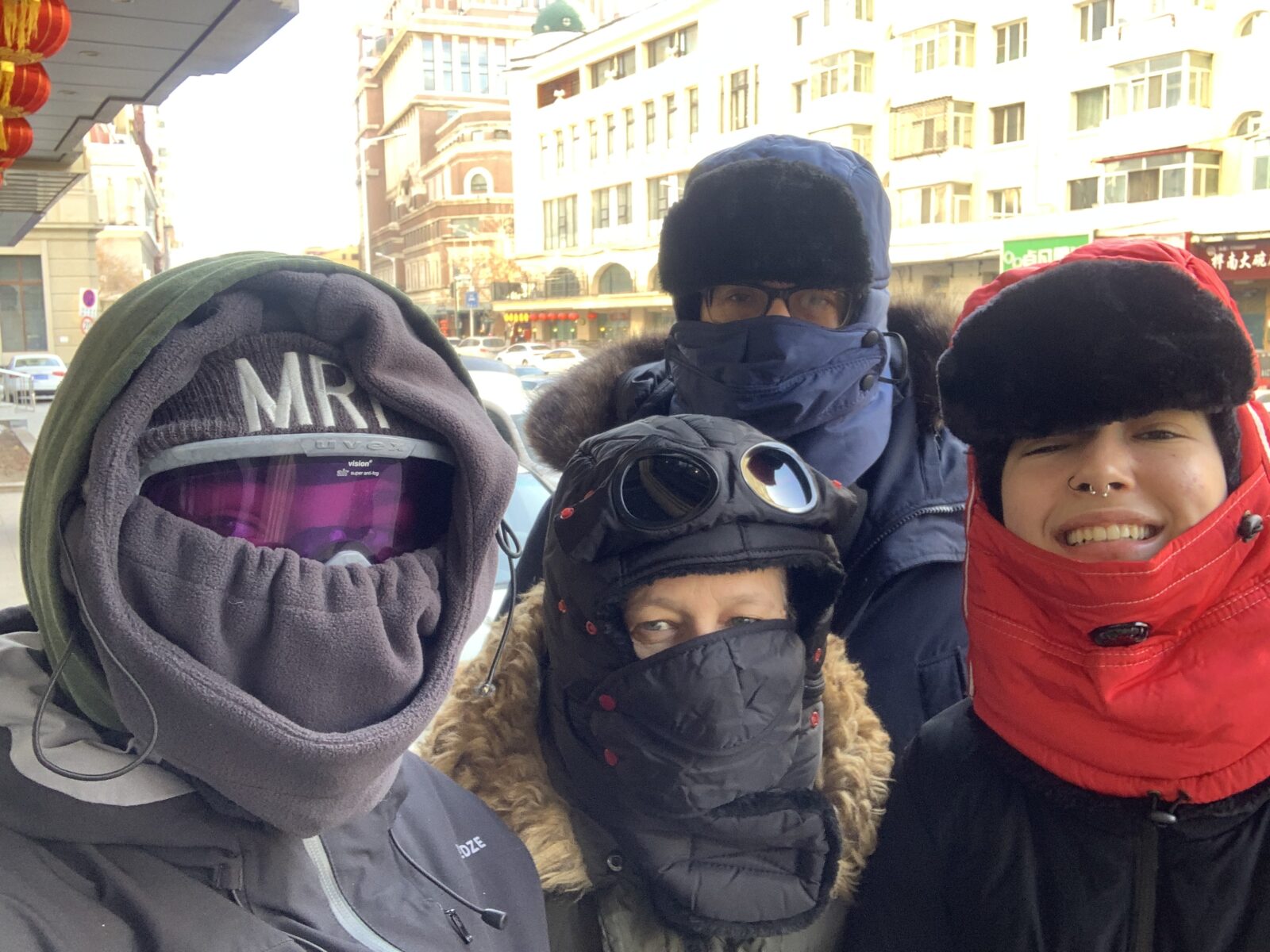
Harbin is by far the coldest place I have ever been – and as I went to college in Minnesota – that’s saying something. Harbin has a population of over 10 million people and before this past summer when Celia and I read the book People Love Dead Jews – which has a chapter on this city – I had never heard of Harbin. There are so many humungous cities in China that I have been completely ignorant of. Harbin is famous for it’s over the top Winter Ice and Snow Festival – and we had heard it was not to be missed. That, and our interest in the very large Jewish community that lived in and made the city the thriving metropolis that it is- made us very interested in going.
After checking into the hotel and bundling up (see picture above) we strolled along the main old street and found a dumpling shop to grab dinner and try Harbin beer (very light).
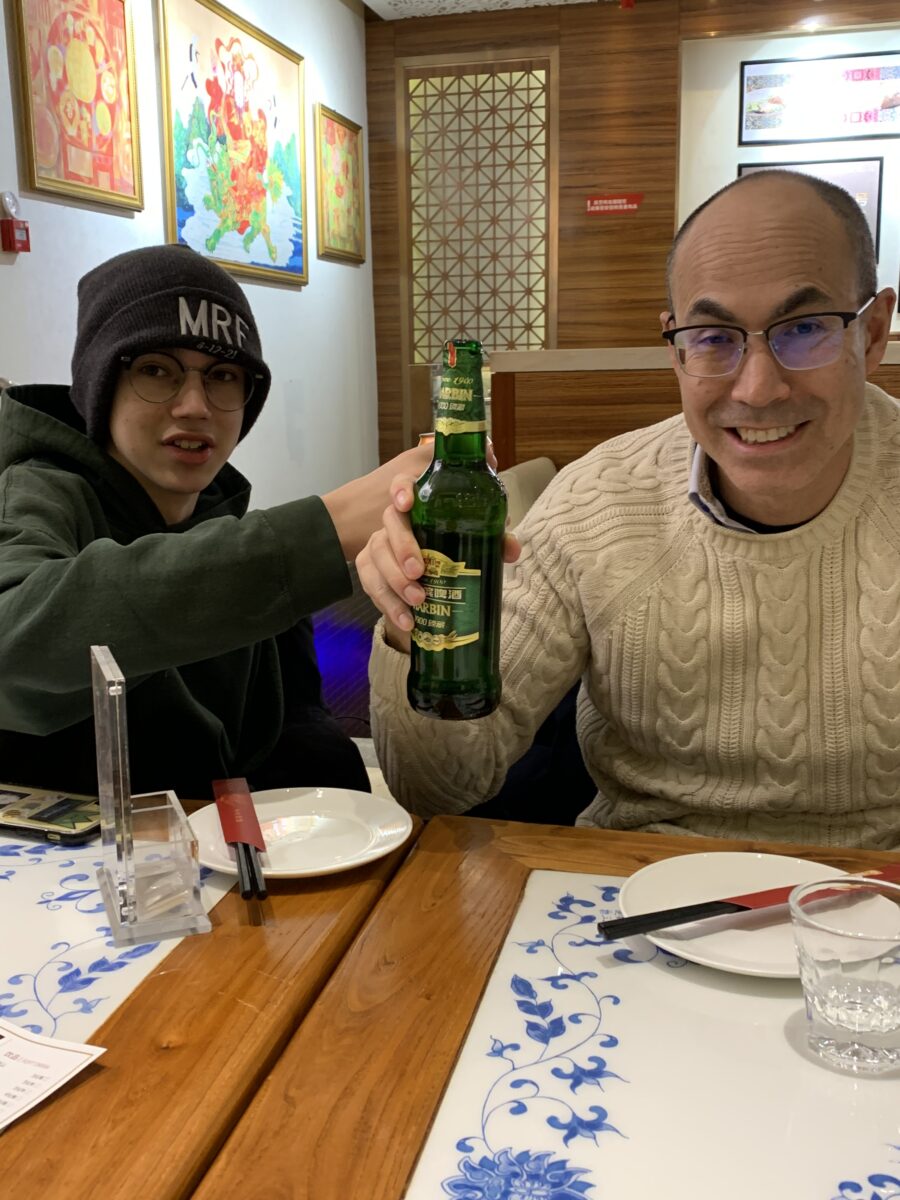
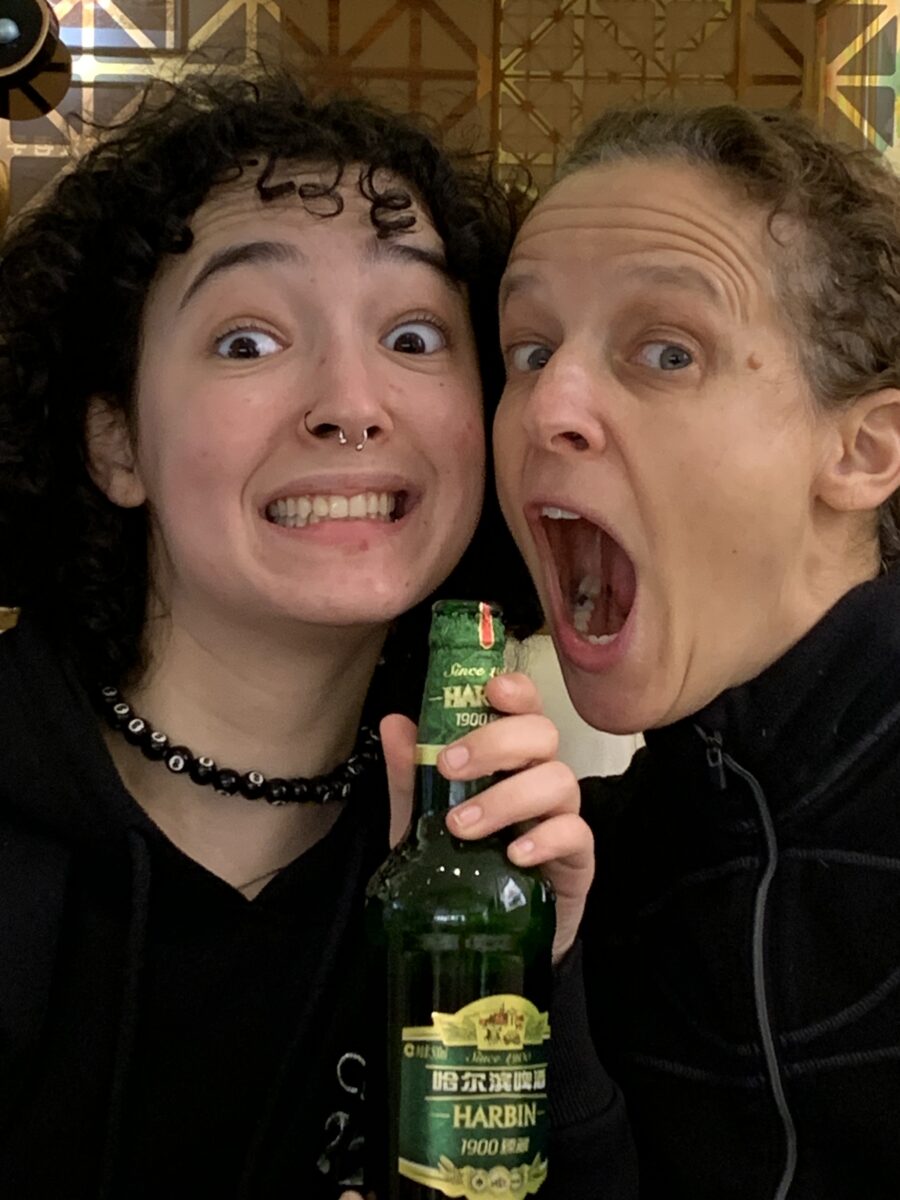
The next morning after the Chinese buffet breakfast at our hotel we bundled again and walked out to the river front. On the river were lots of activities – though not the many people we expected and feared. It was quite empty. There were ice sleds and carnival type rides spinning people on the ice, ice skating and ice bicycles. Four wheel vehicles were spinning people on a long line of inner tubes connected with ropes. I convinced the kids, and then the man driving the four wheel vehicle (in Mandarin!!), instead of driving us in crazy circles, to pull us to the other side of the river to where the Snow Sculpture Festival was taking place.
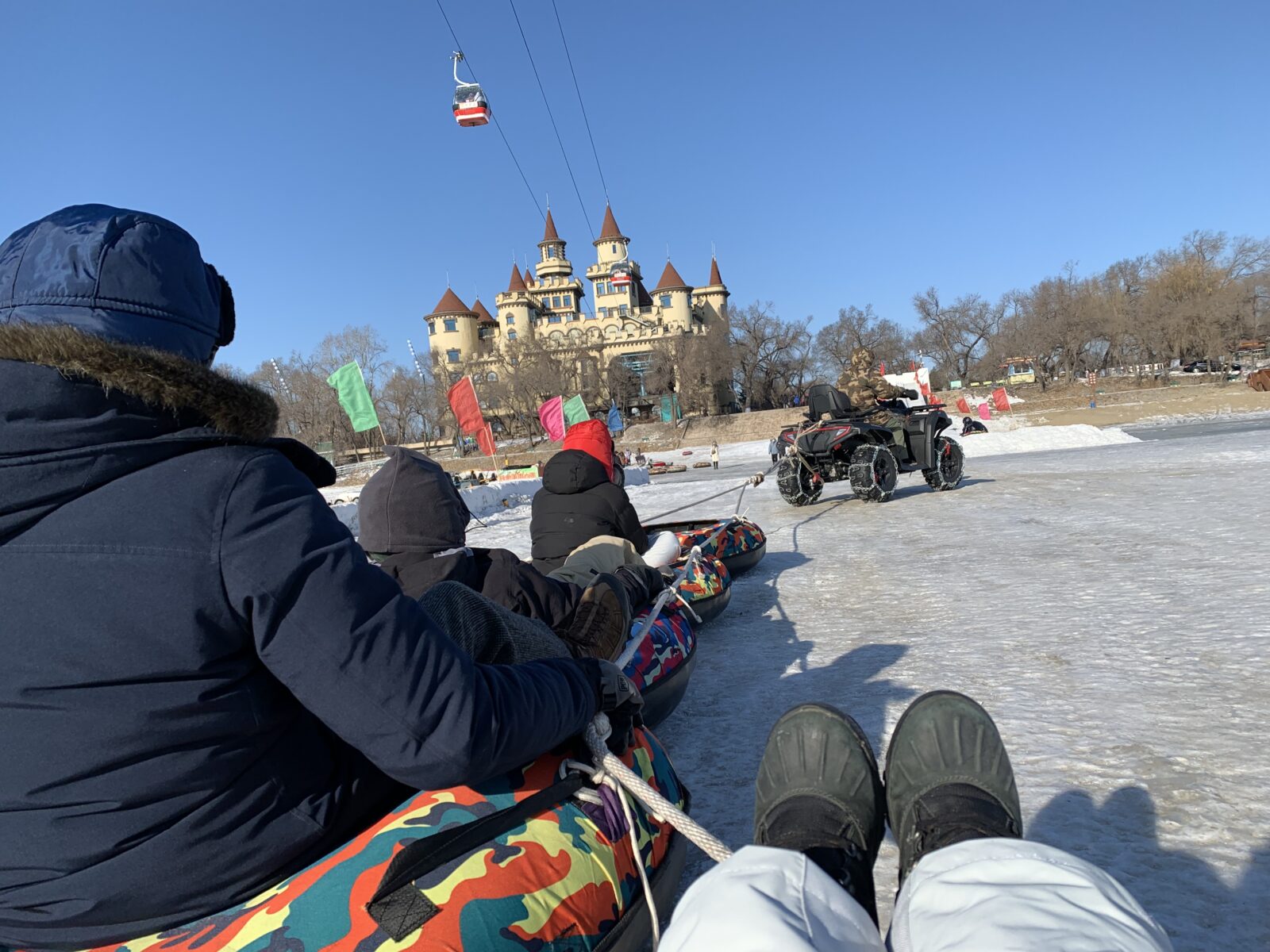
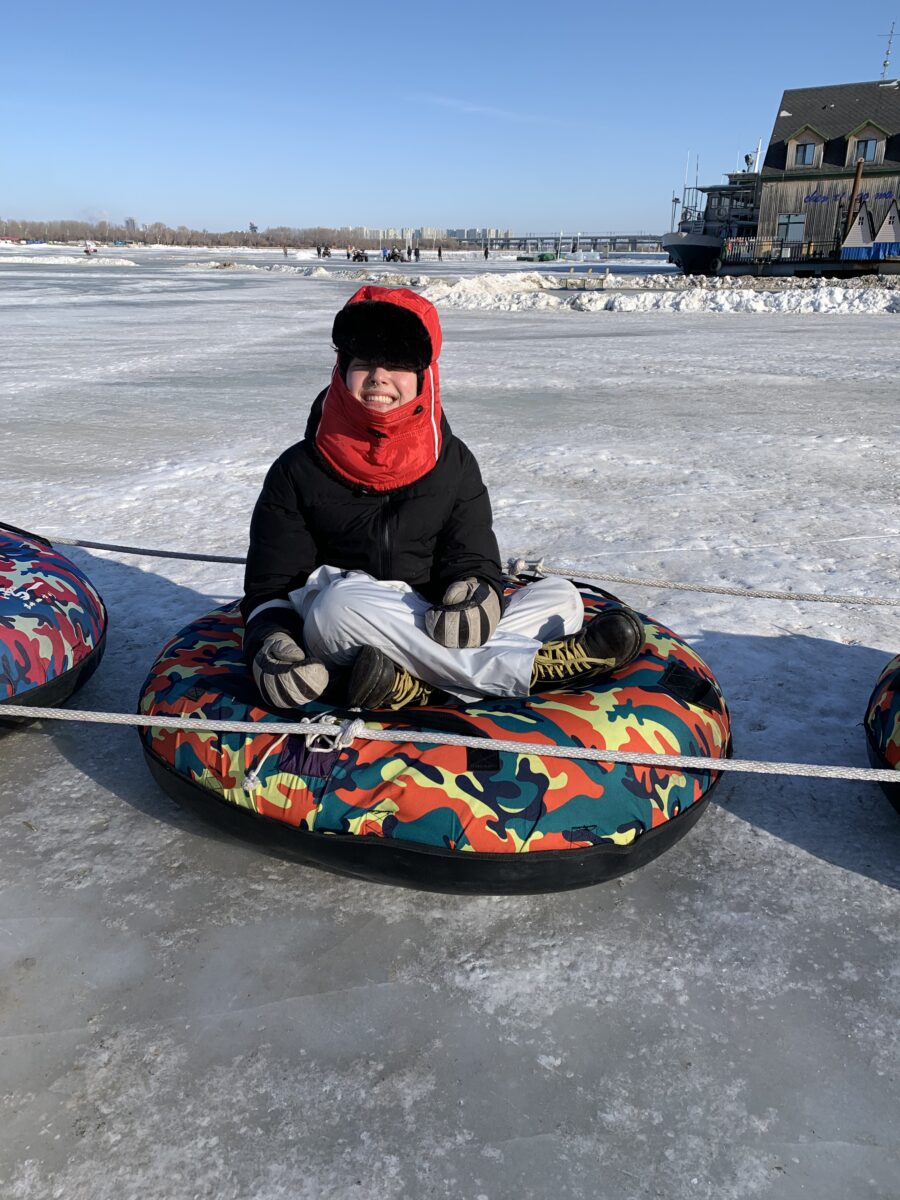
The snow sculptures were super impressive!
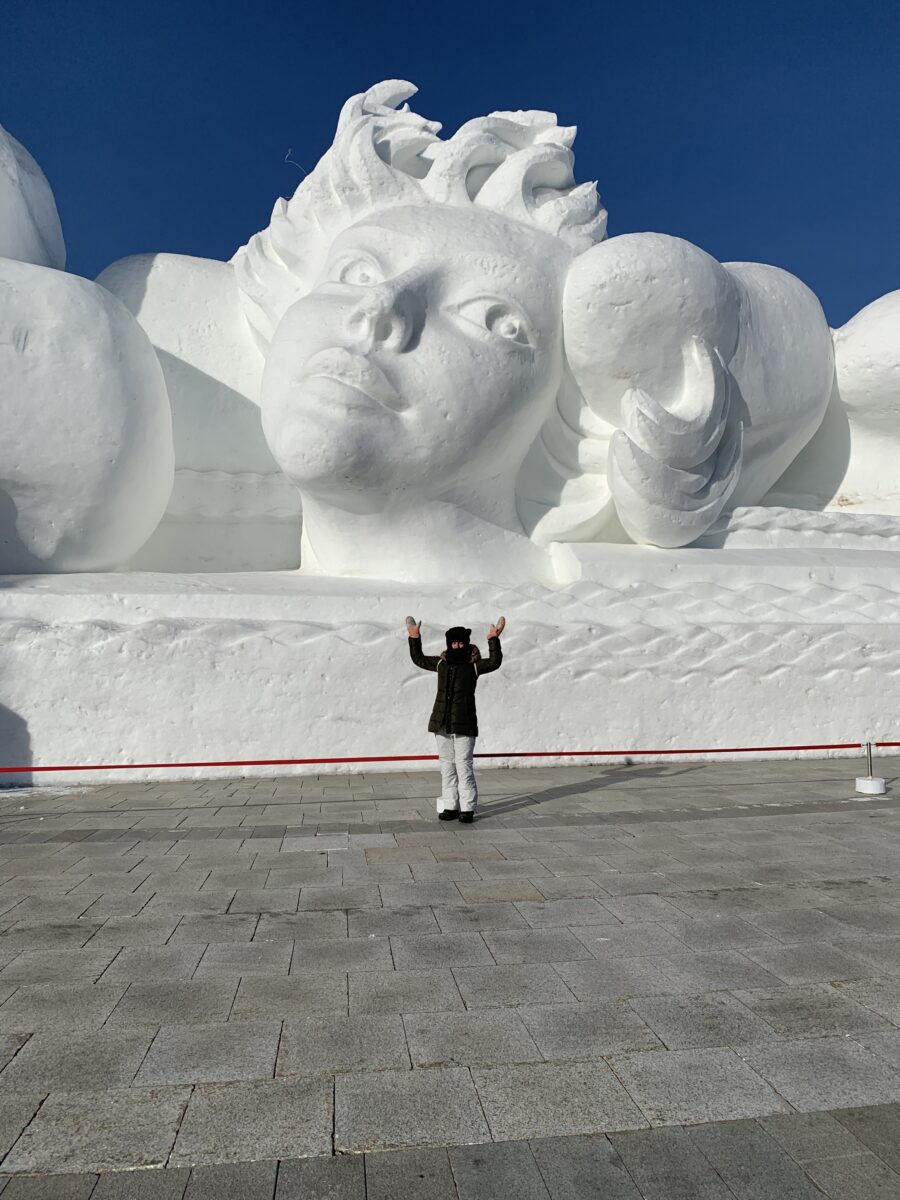
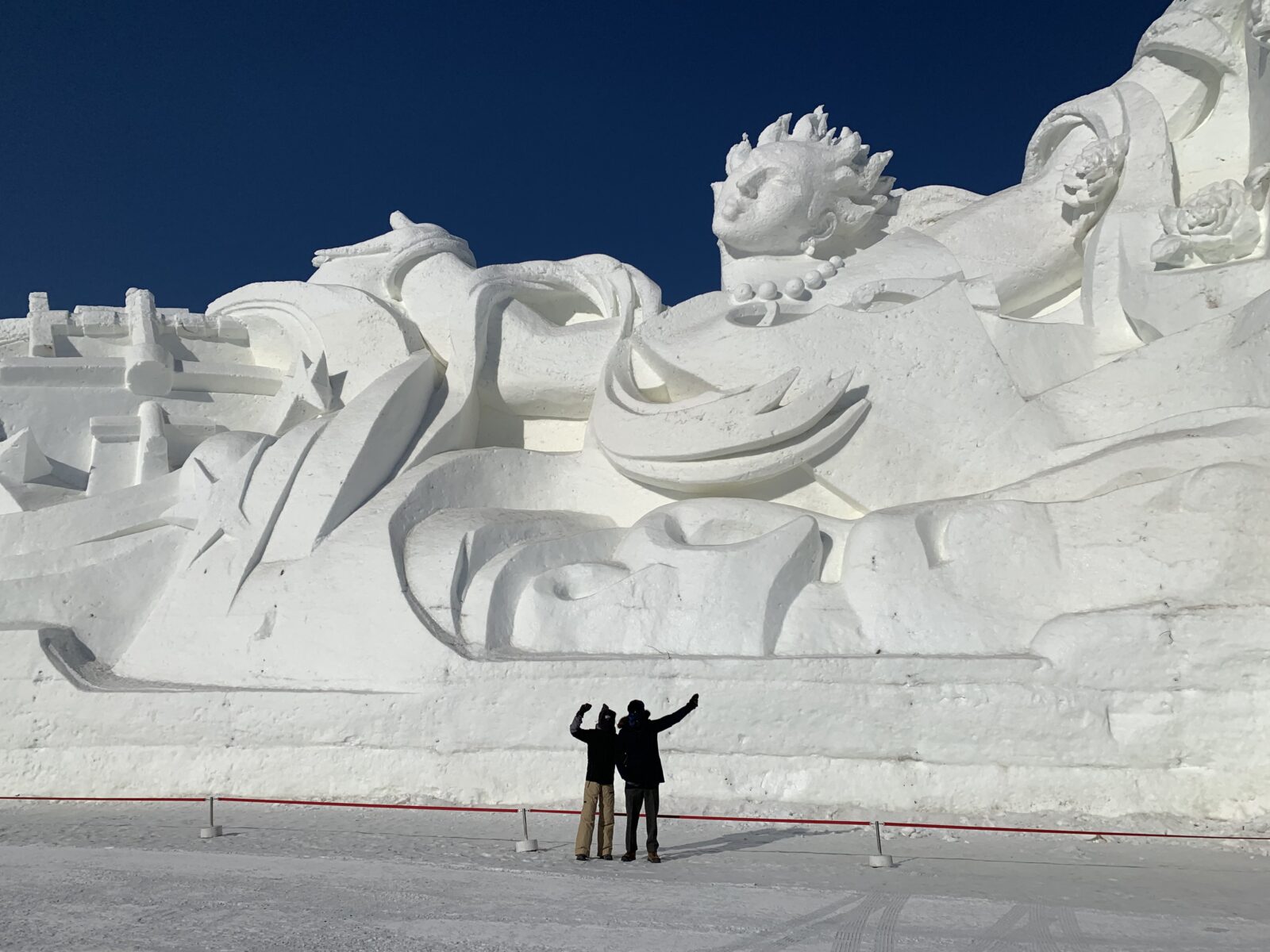
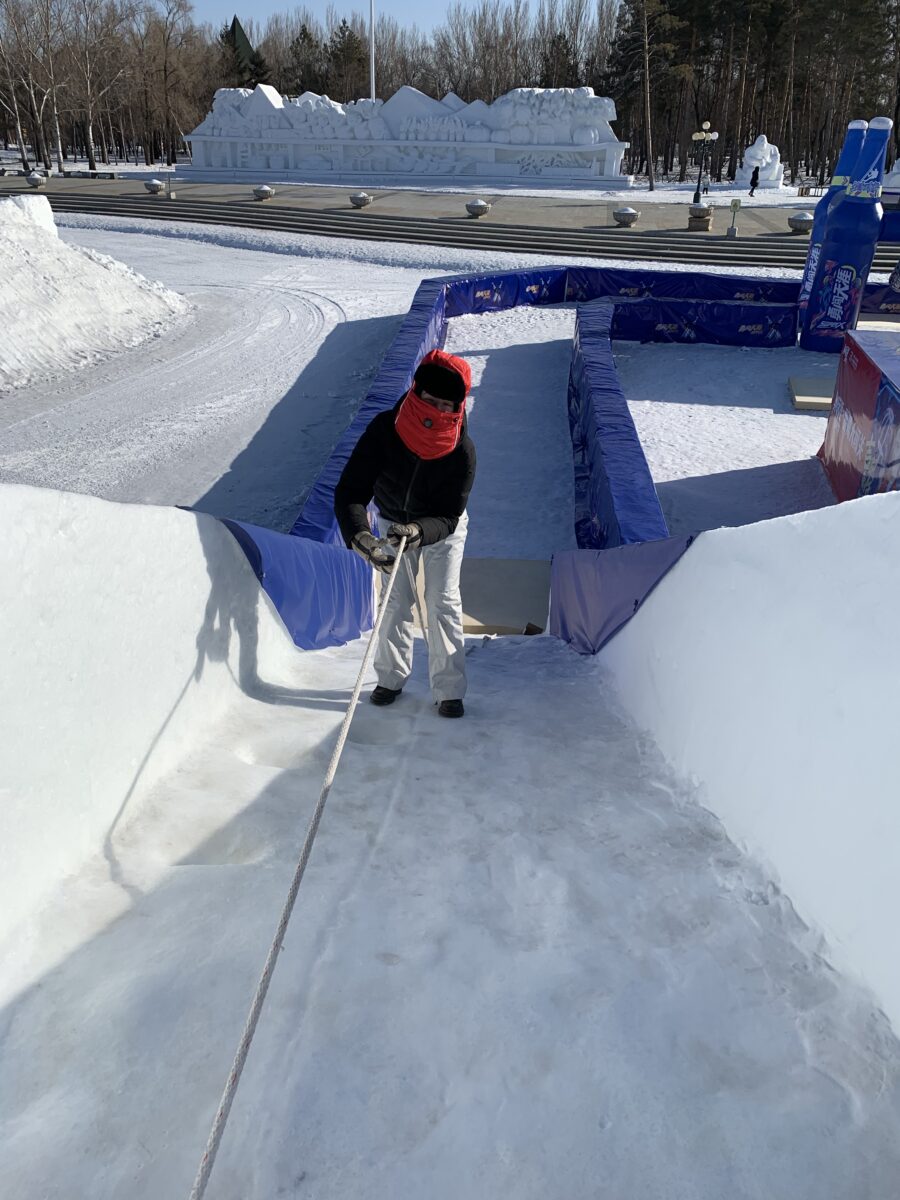
And in between all the sculptures they had crazy dangerous ice slides and this silly Ninja Warrior type obstacle course
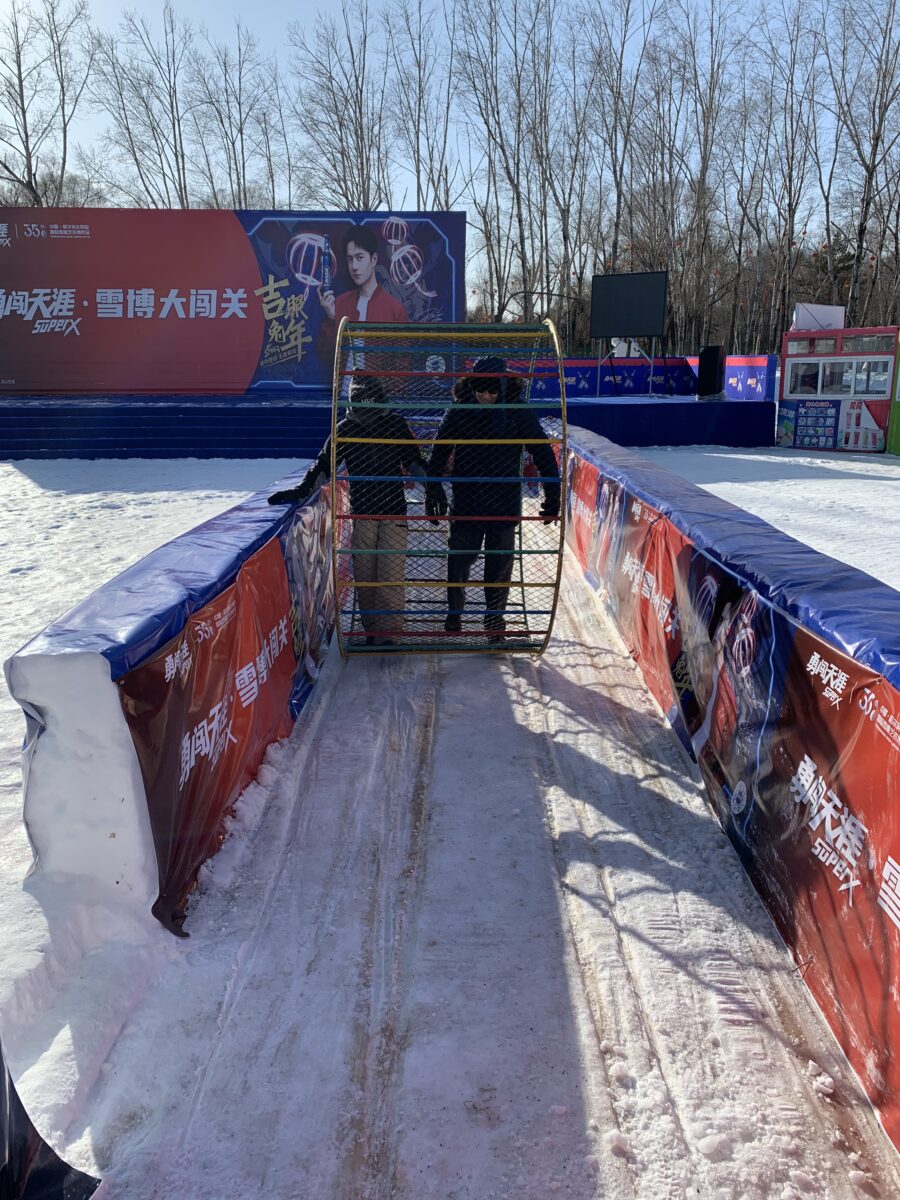
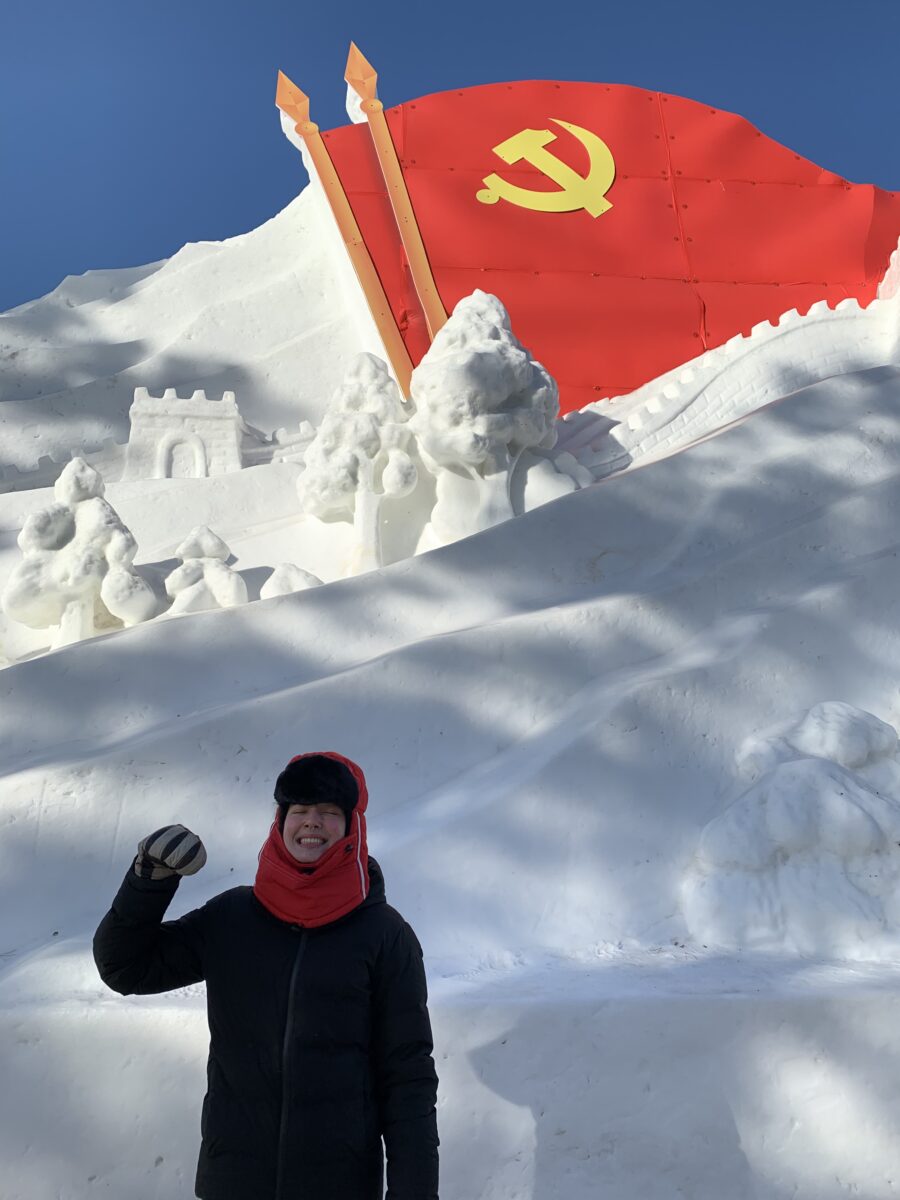
After the snow sculptures, we took a gondola ride back over the river. Morton headed back to the hotel and Morton, Dan and I found a delicious Chunbing restaurant (I have found out that’s the name of those delicious pancakes we ate at the Beijing Hutong restaurant) and ate a late lunch.
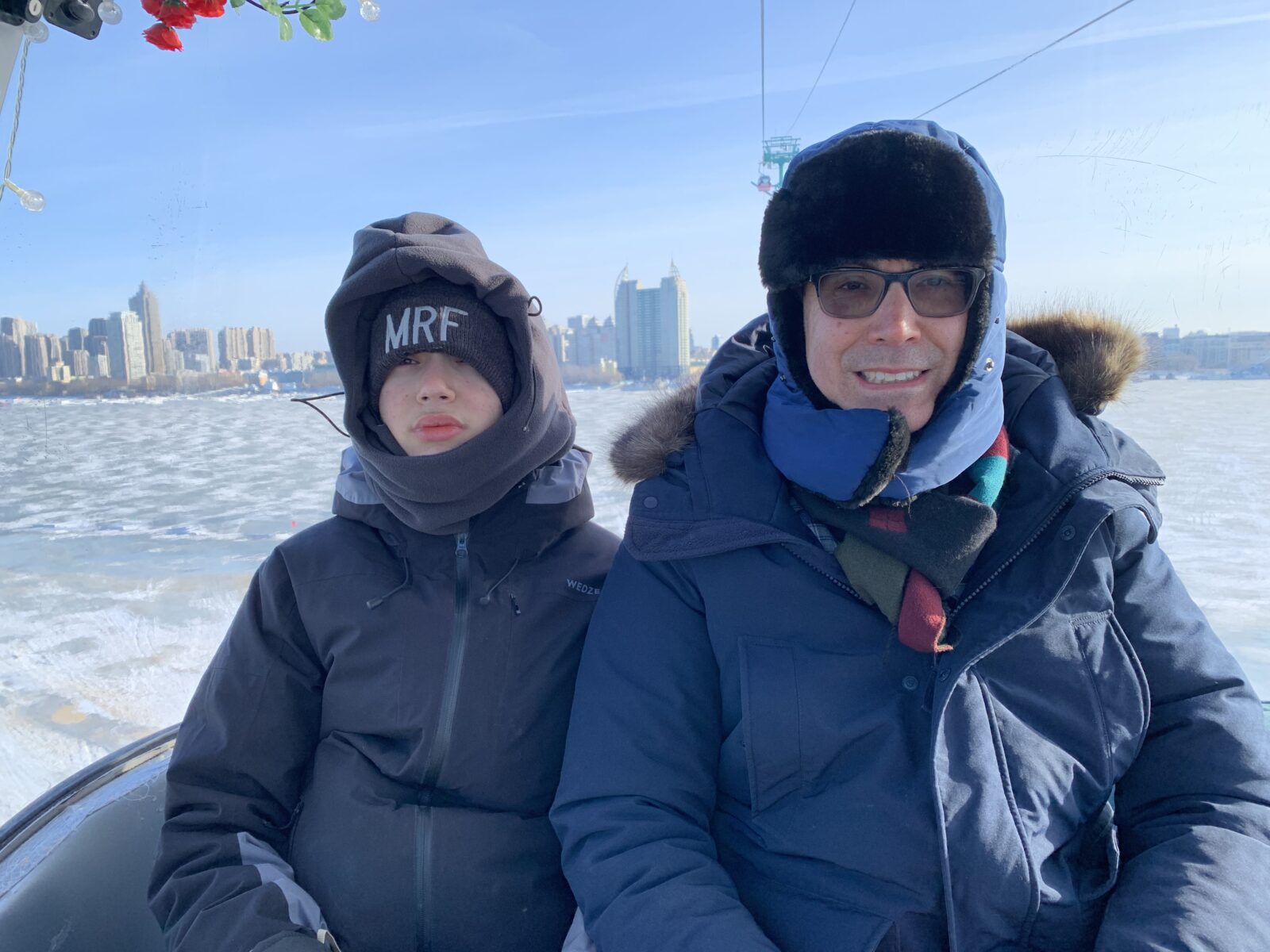
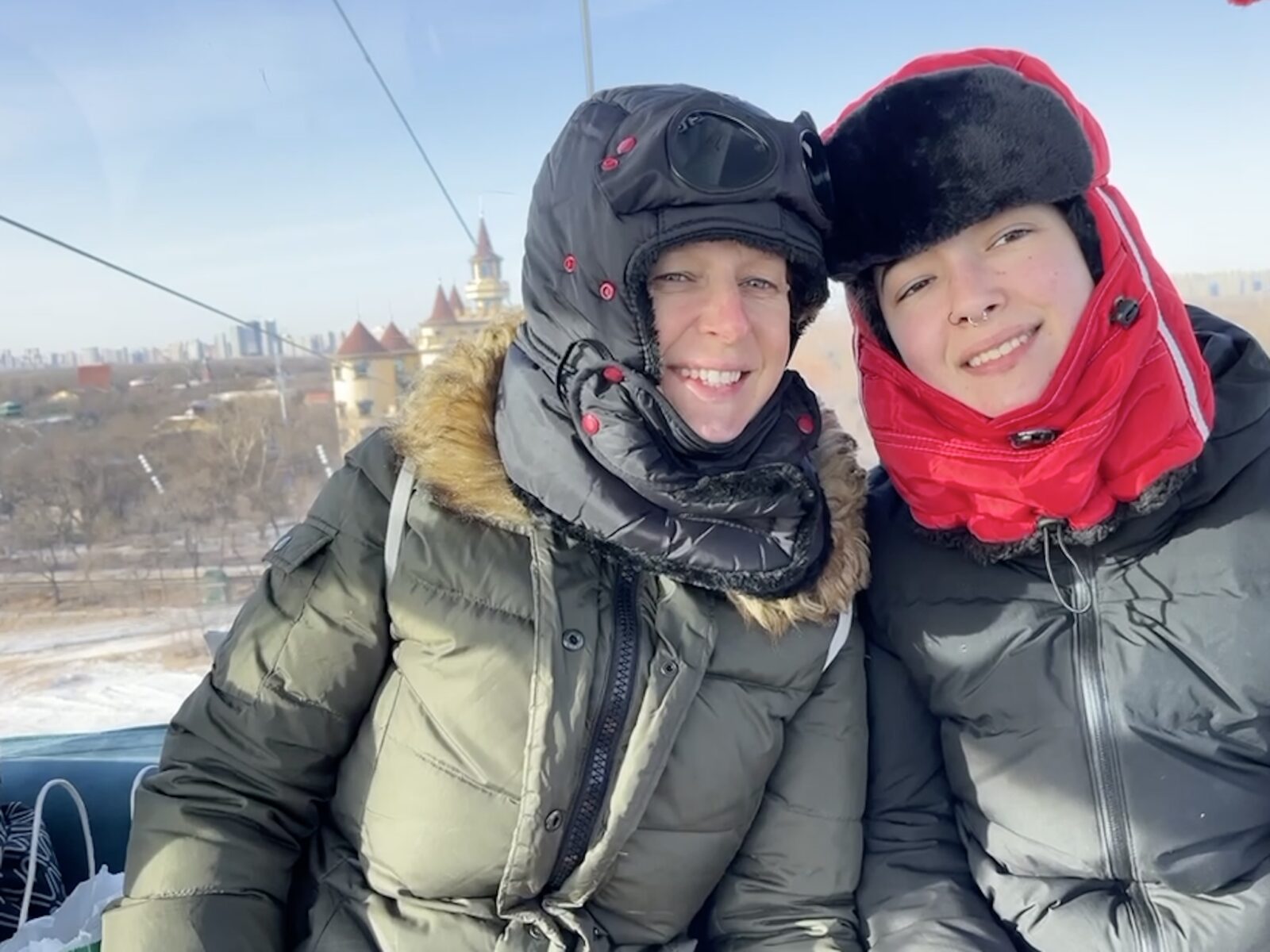
Late afternoon we headed out to see the Ice Sculptures – which are the most famous part of the Harbin Winter Festival. The handiwork was not as impressive as the snow sculptures, but the overall effect, with the massive size and amount and with the disco lights inside was a fantastic site.
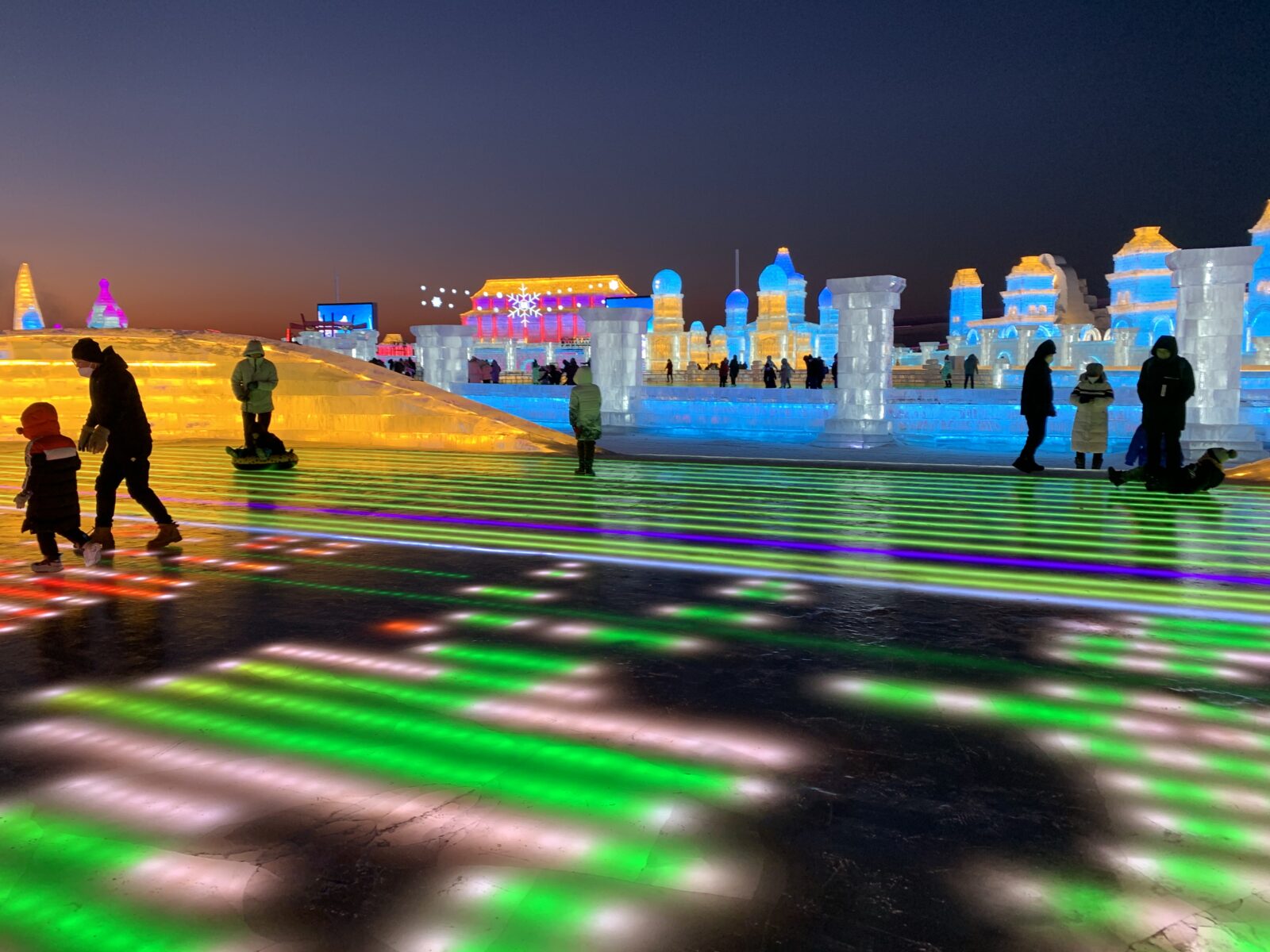
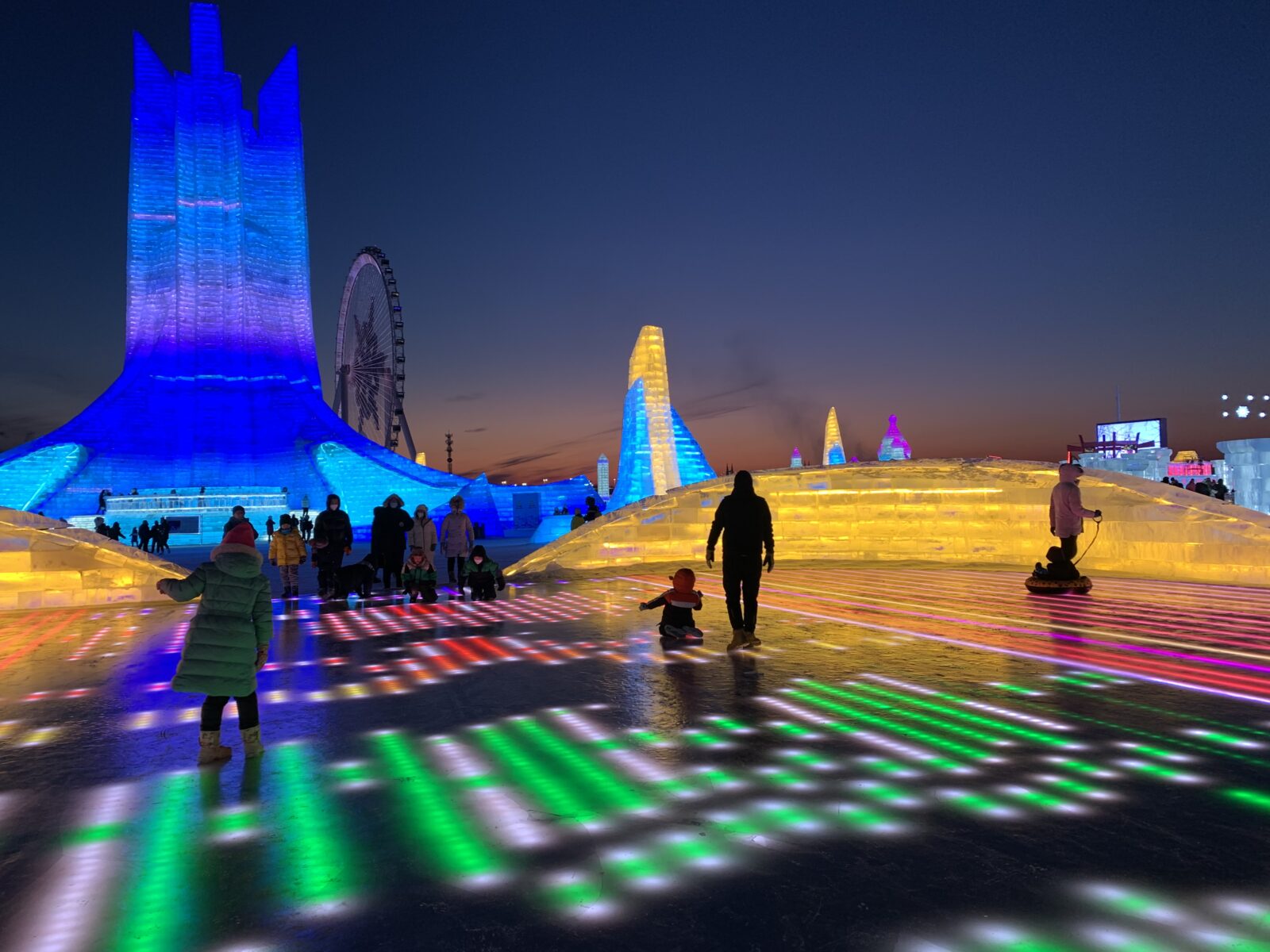
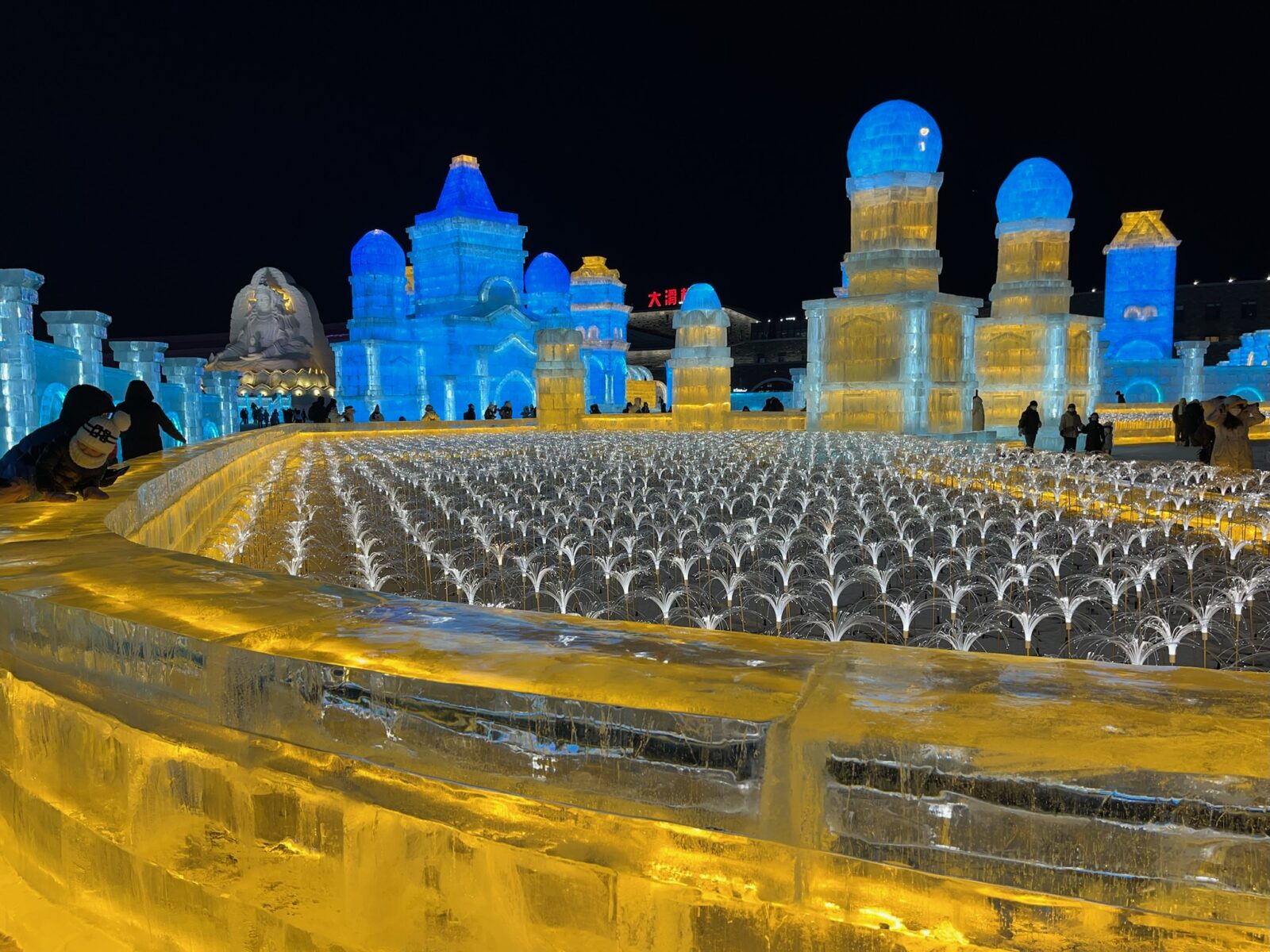
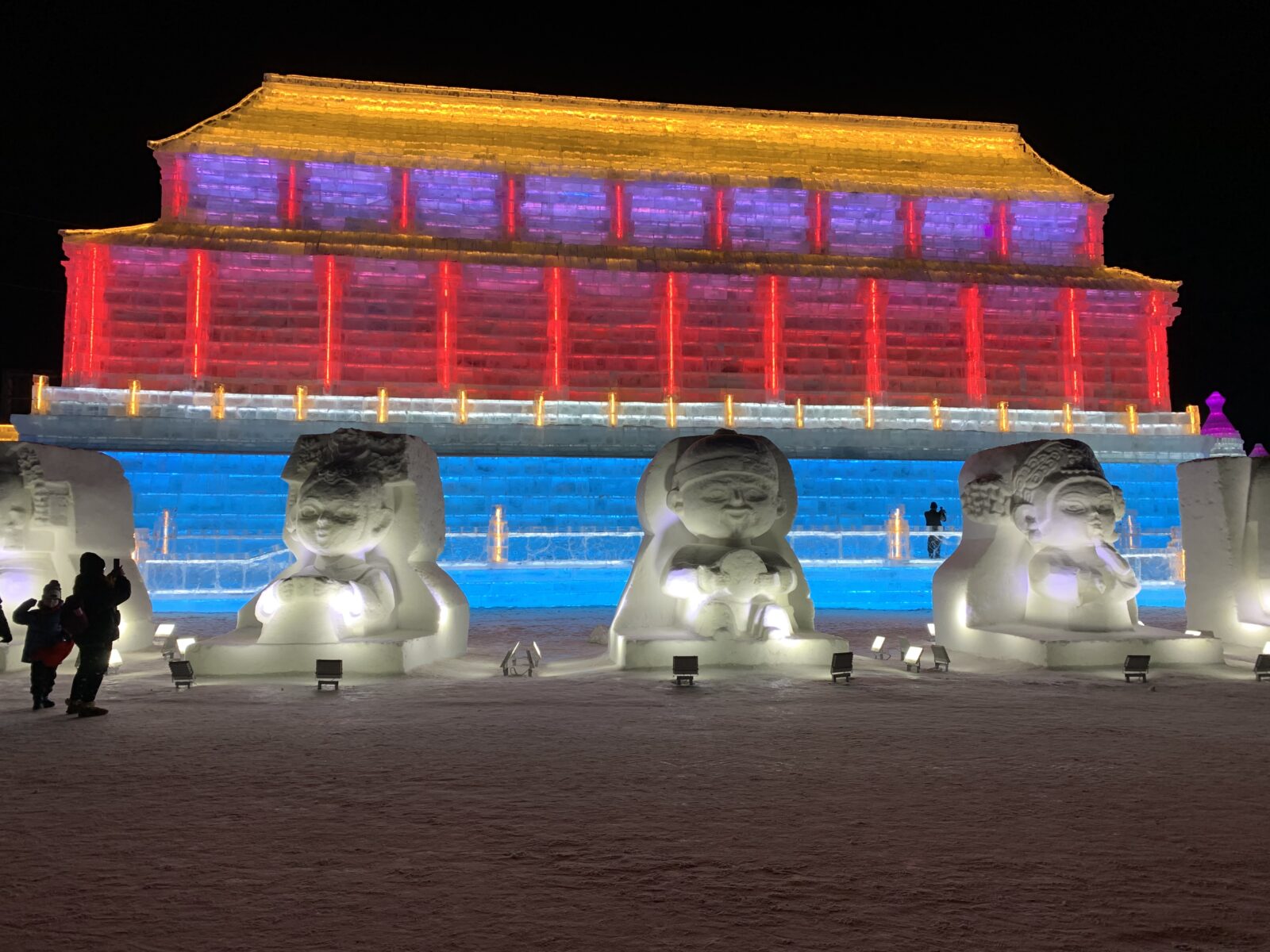
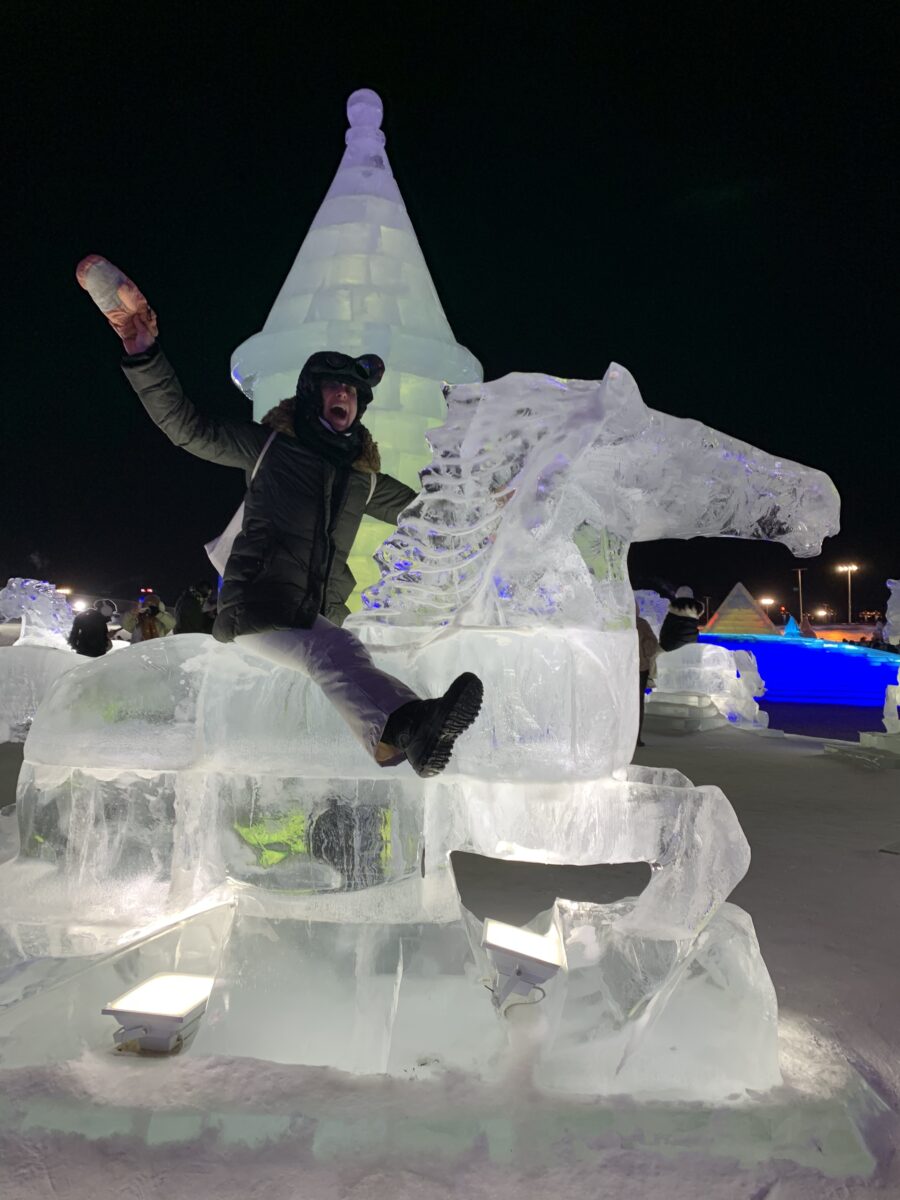
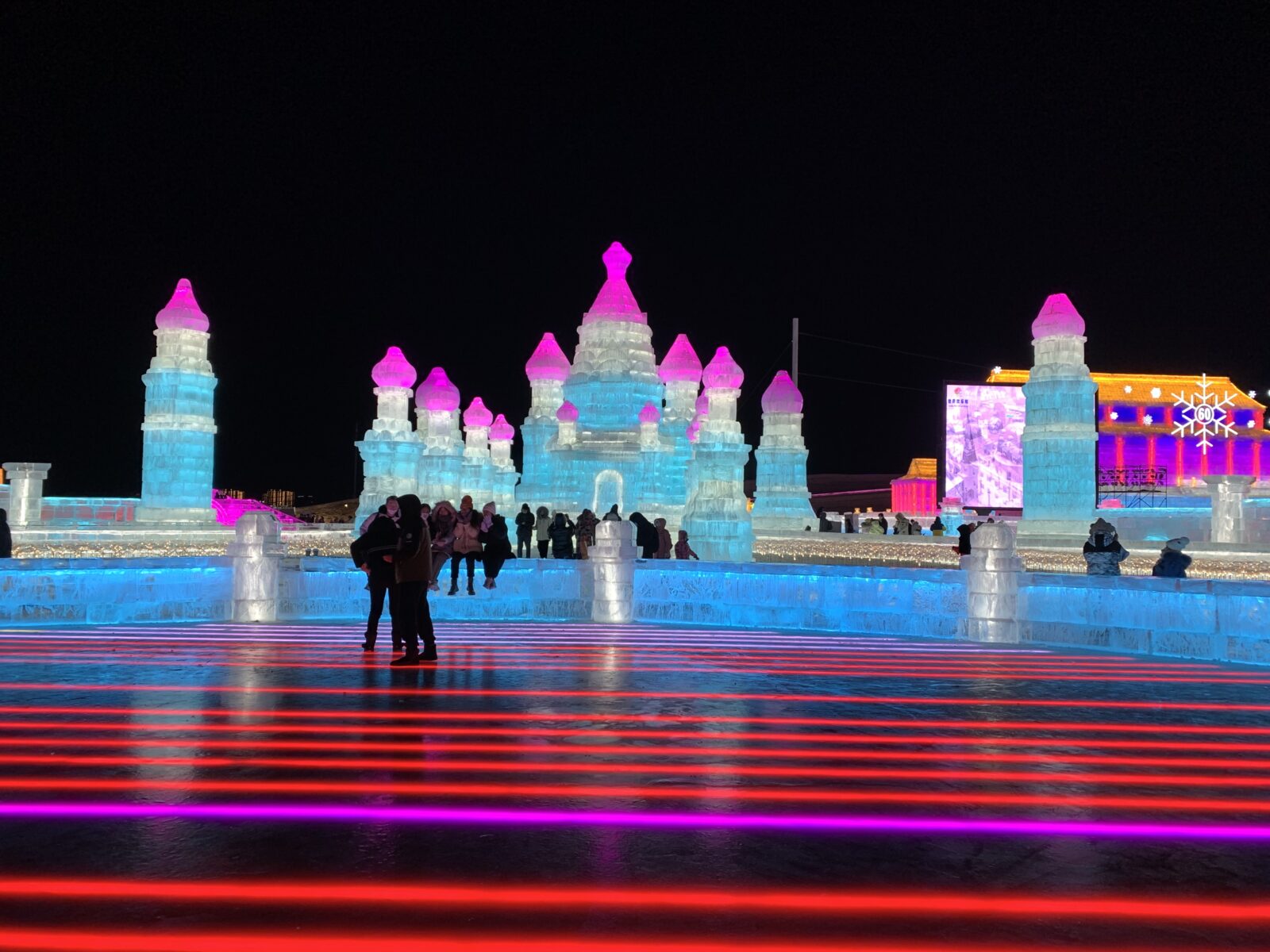
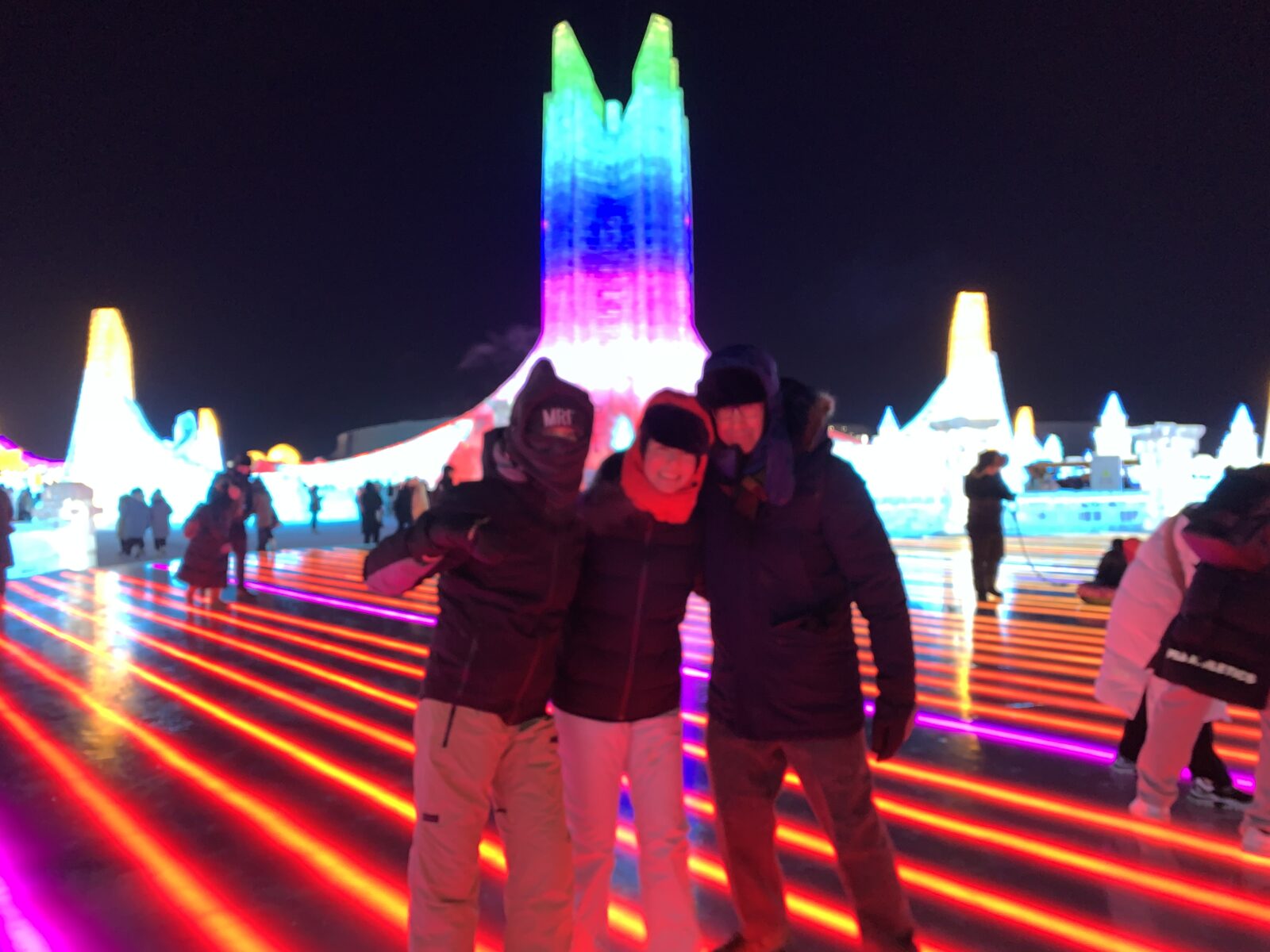
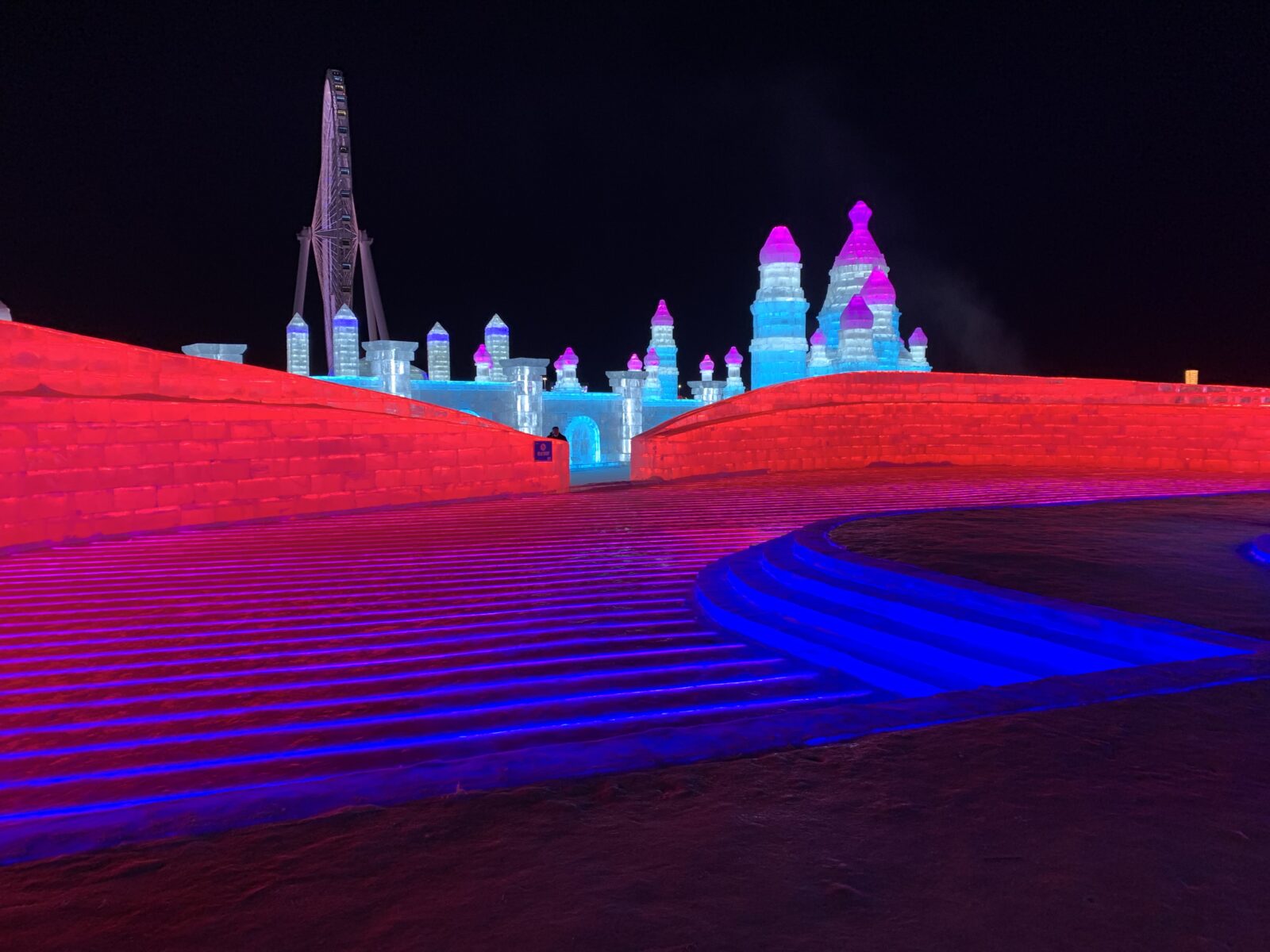
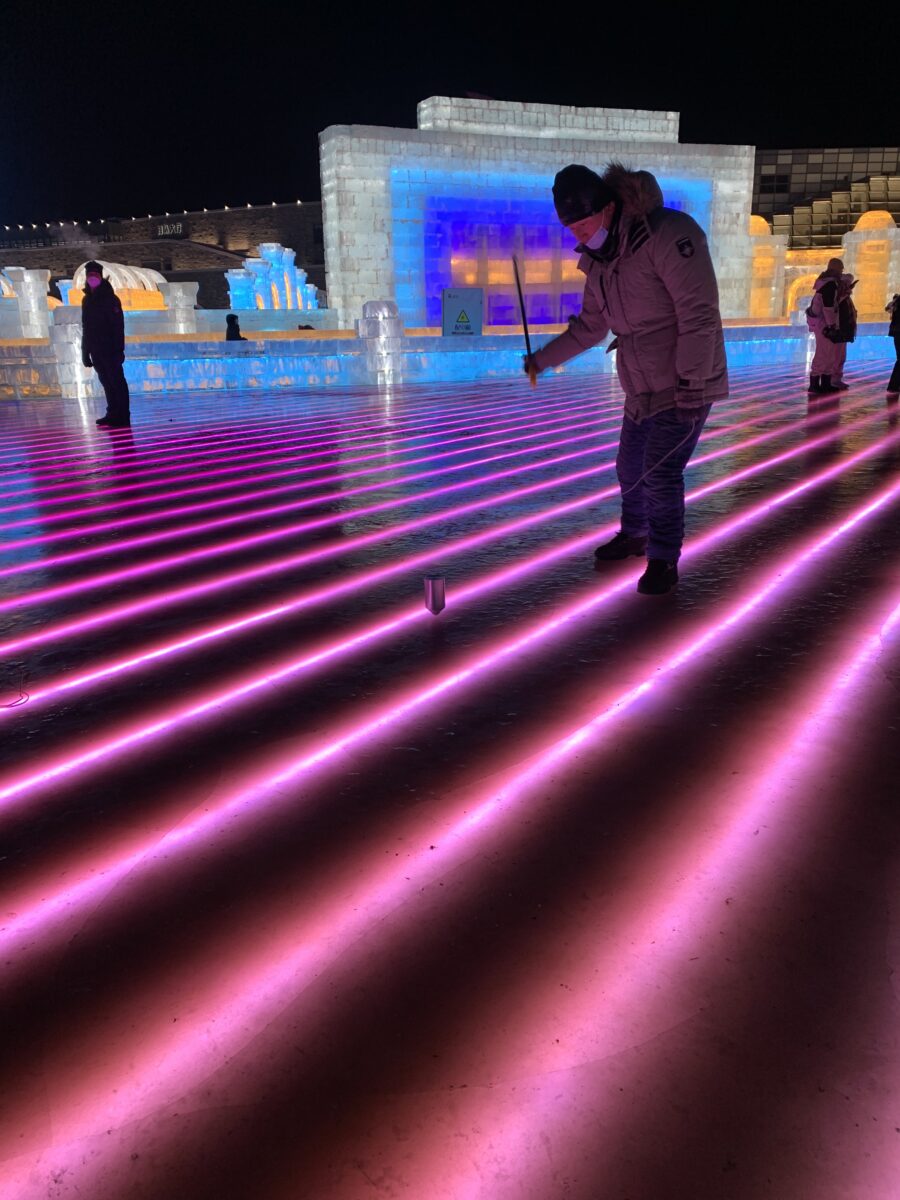
Later that evening we took a taxi to another side of the city to meet with Dan Ben-Canaan – who is known as the only Jew who lives in Harbin. He worked on having some of the many important Jewish buildings preserved. He and his lovely wife Isha had us to their home, gave us many snacks and spoke of the history of the Jewish people who from around 1890-1950 were a powerful force in Harbin.
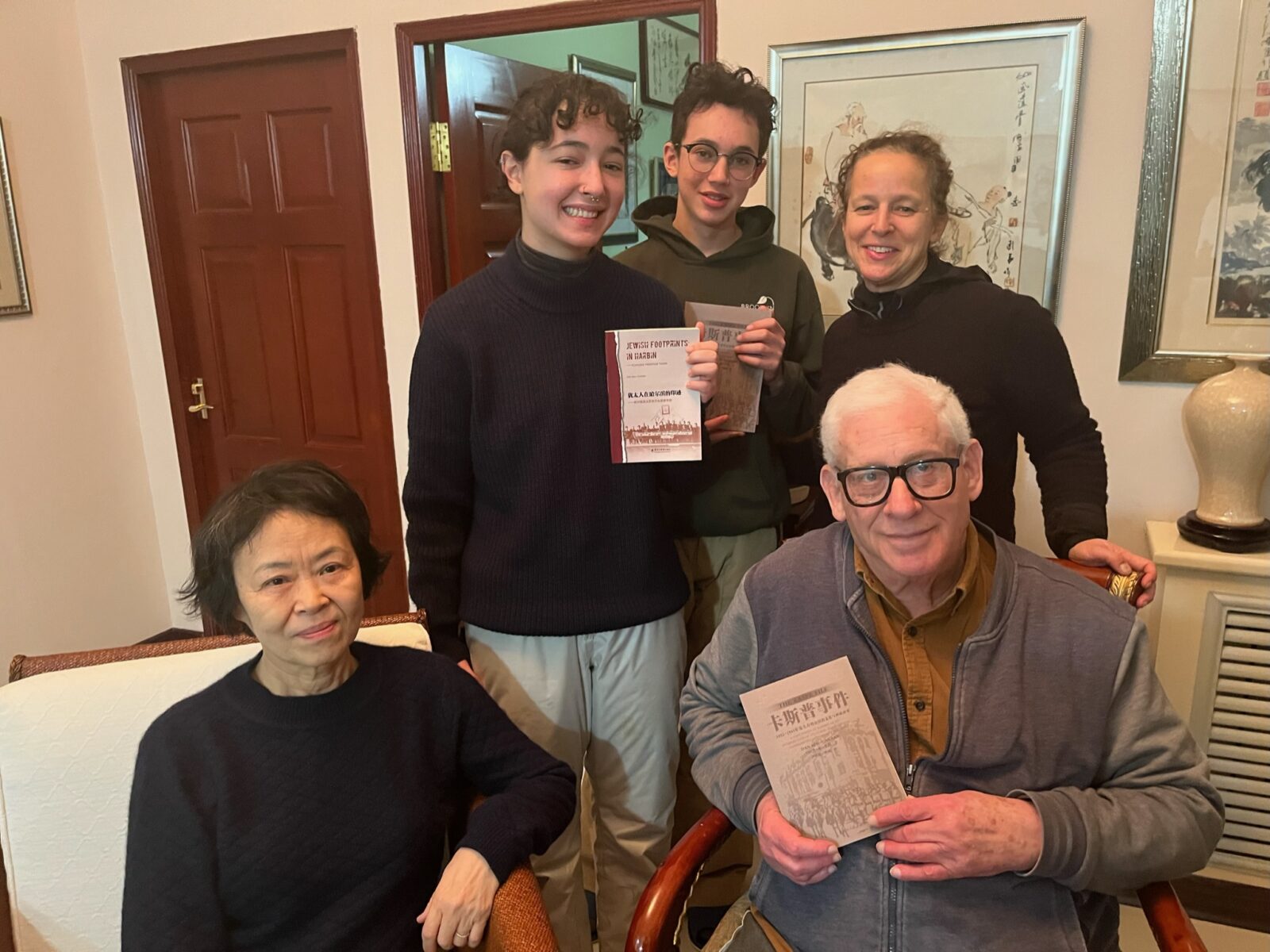
The next day we got up early and spent a good chunk of the day exploring the historical buildings of Harbin.
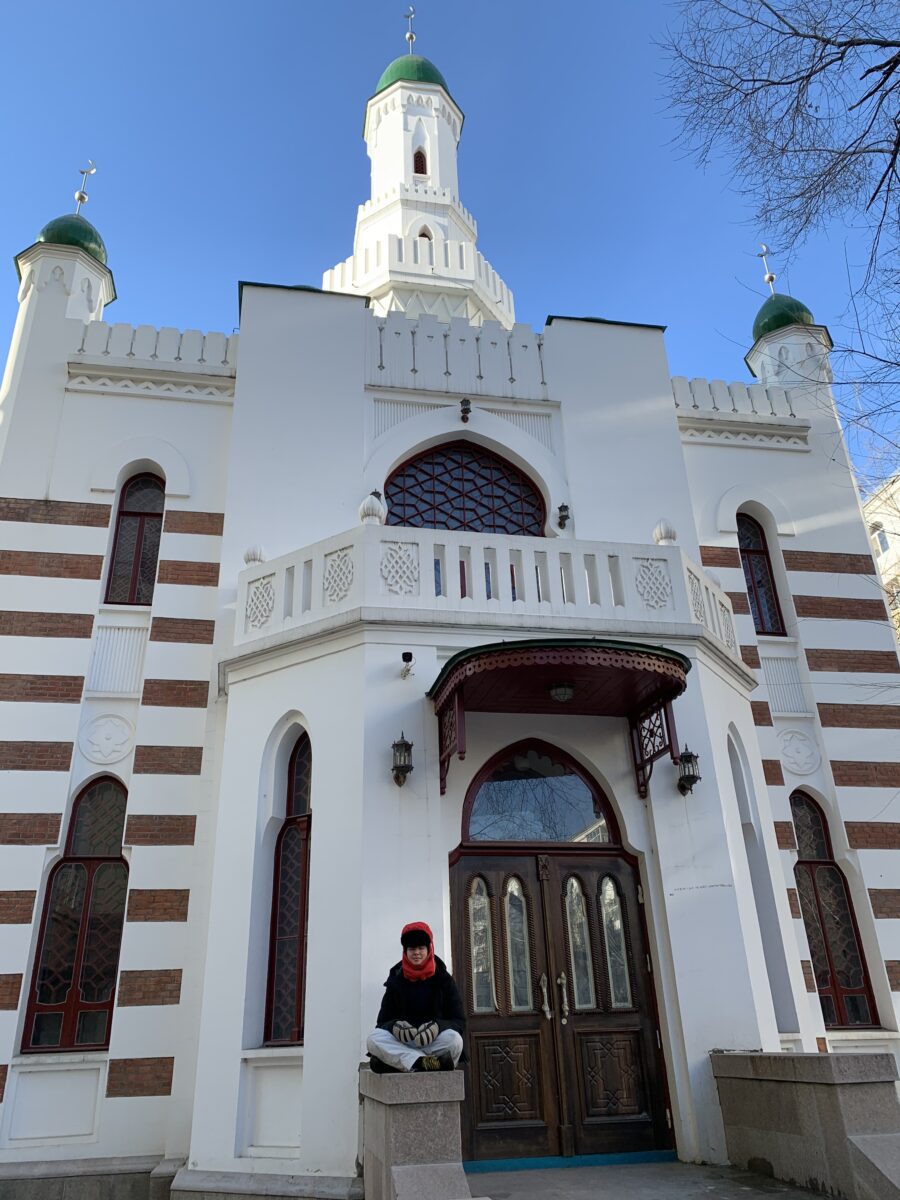
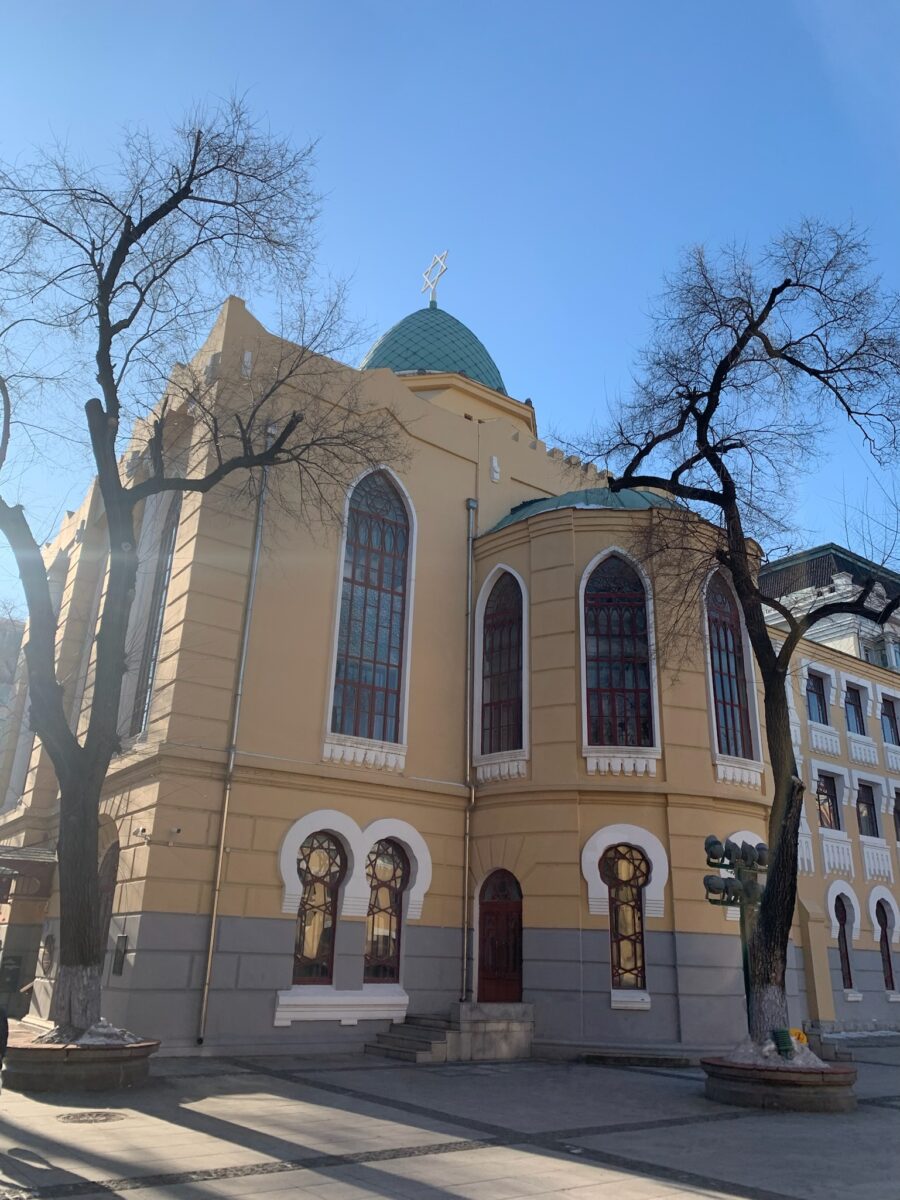
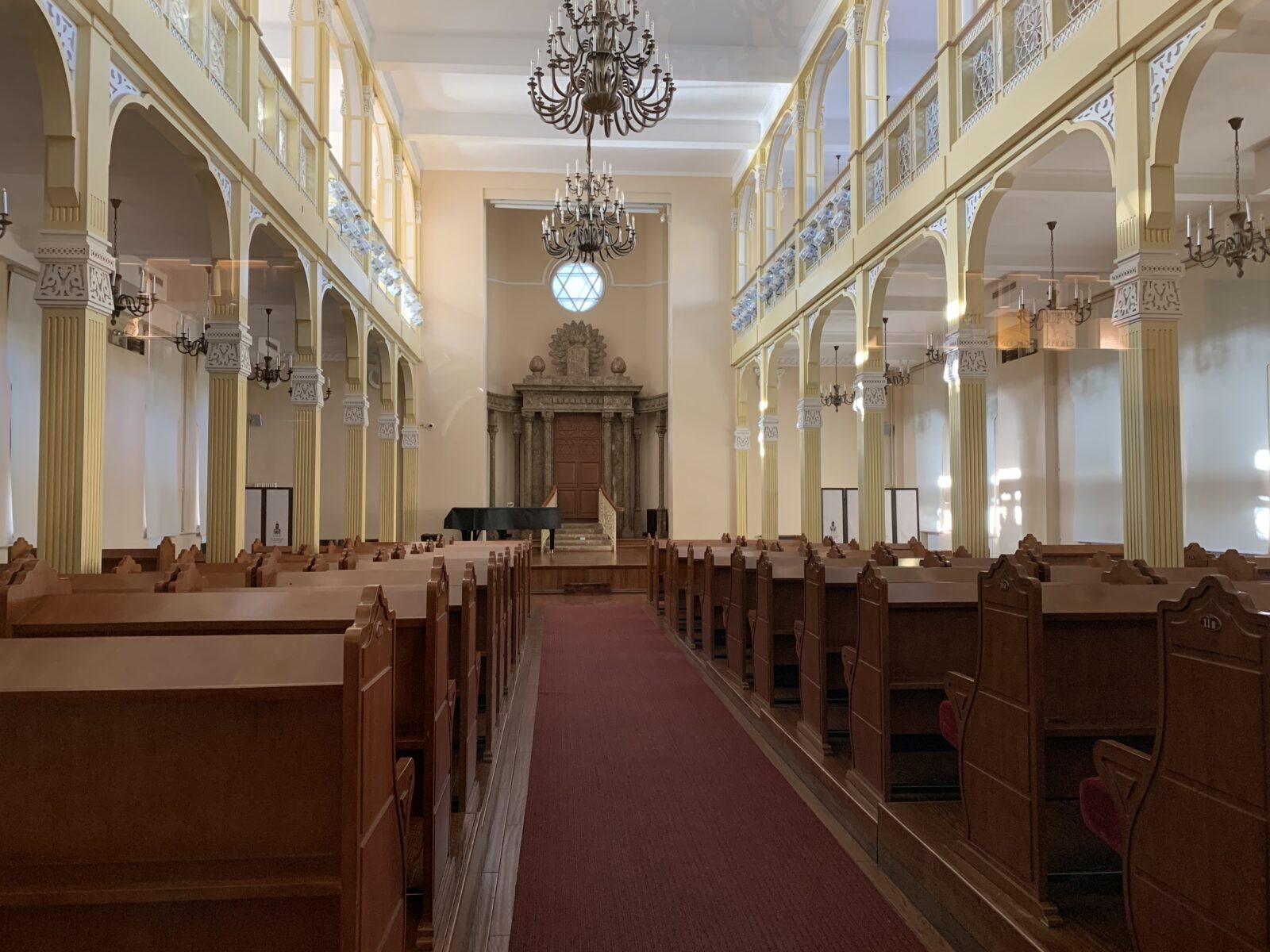
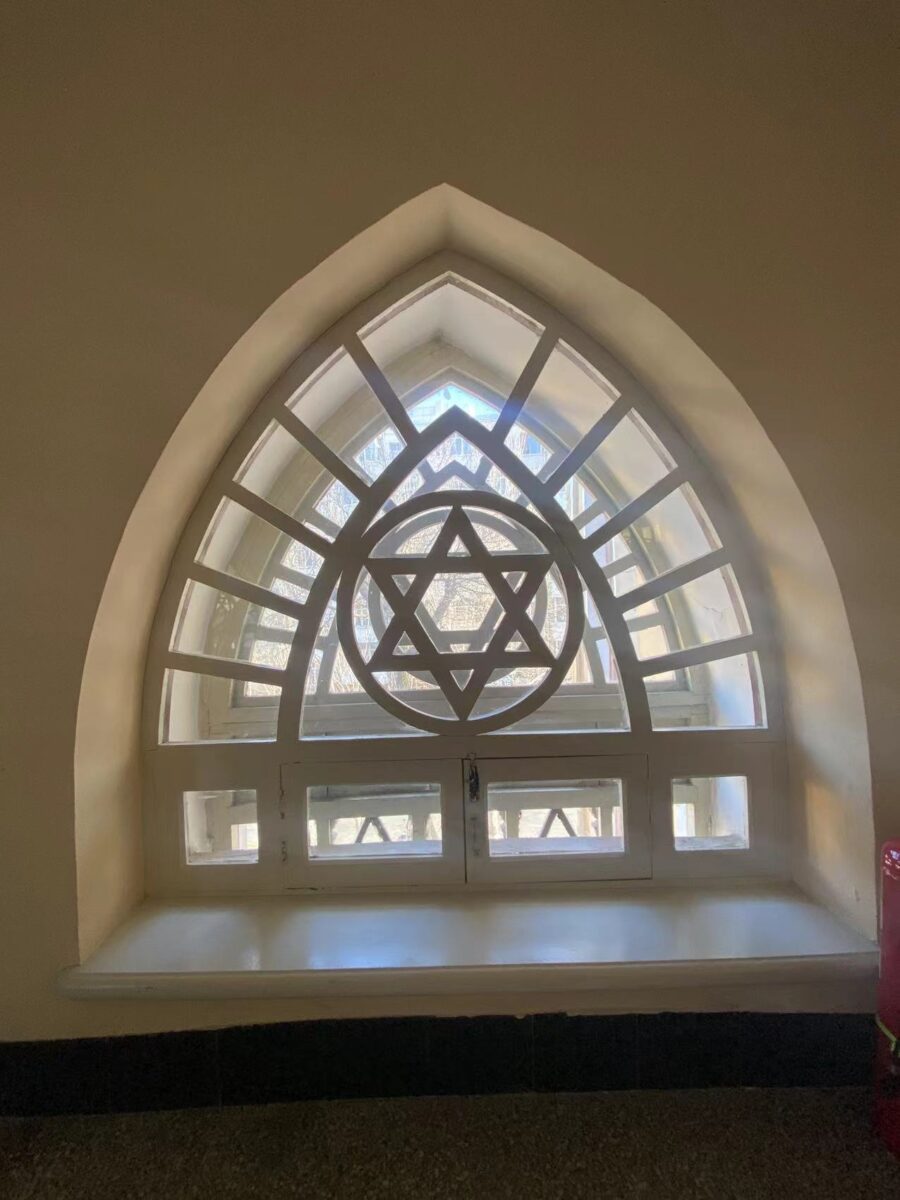
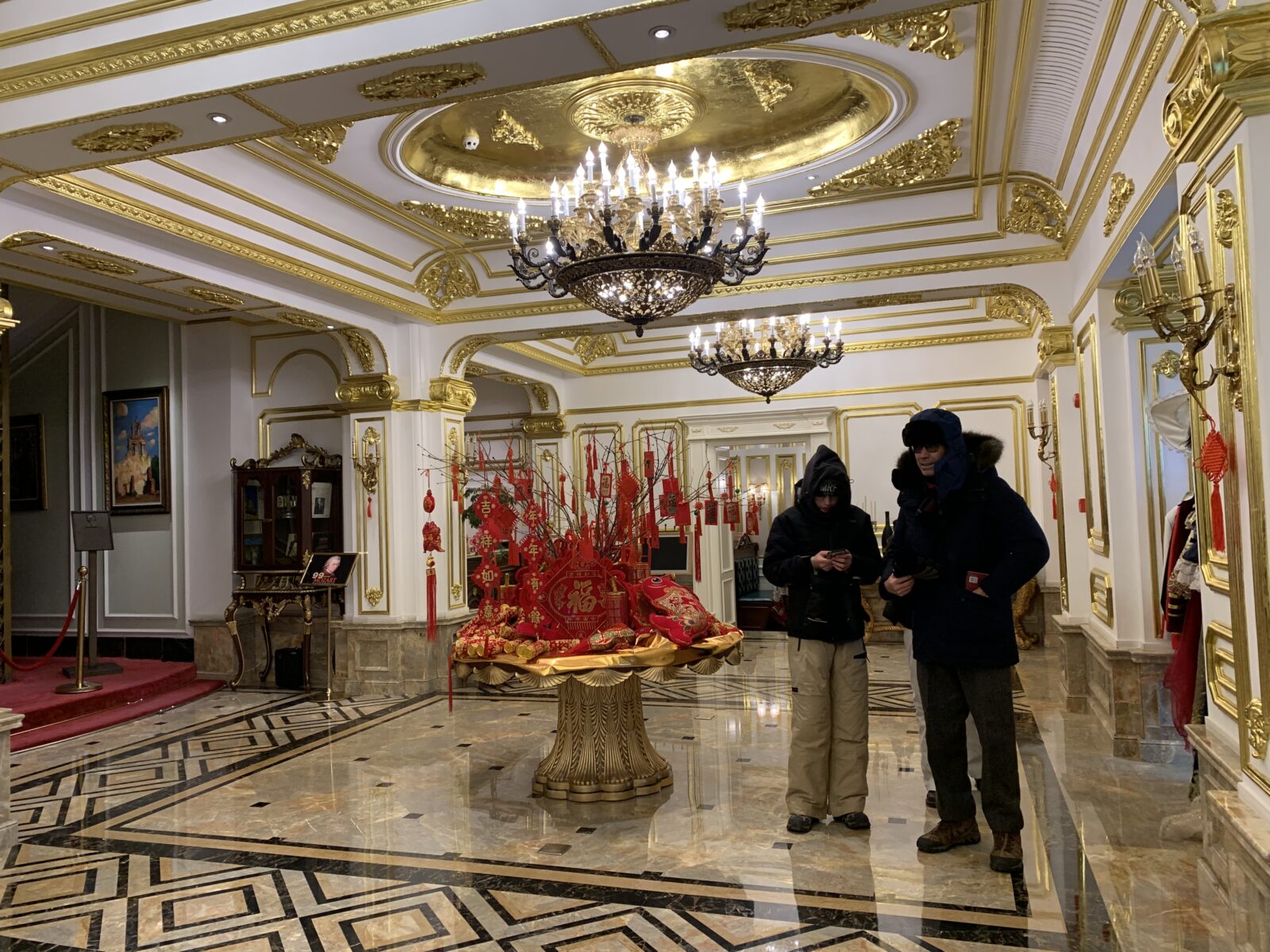
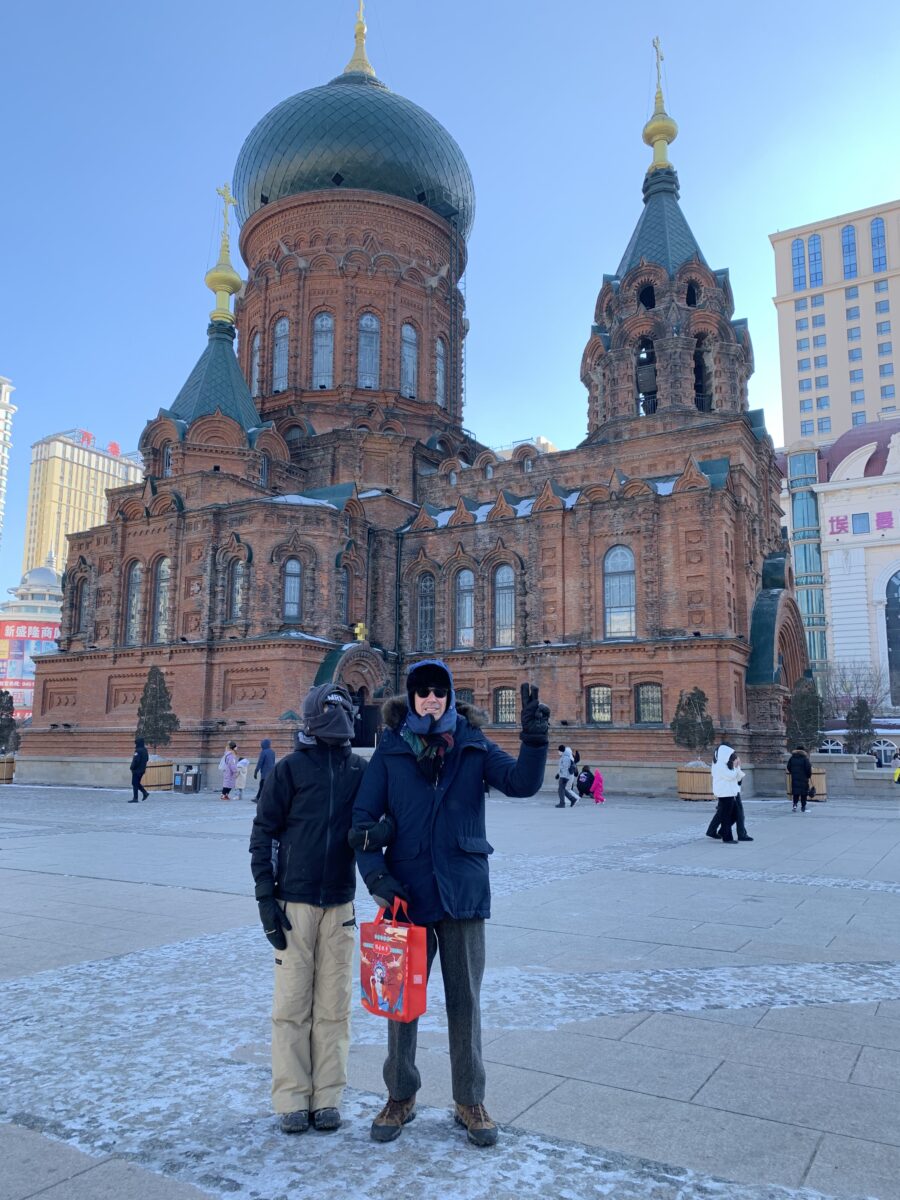
The interior of St Sophia was odd. It needed a major restoration but they had a pianist playing music and a show of traditional western inspired landscapes (plus The Last Supper).
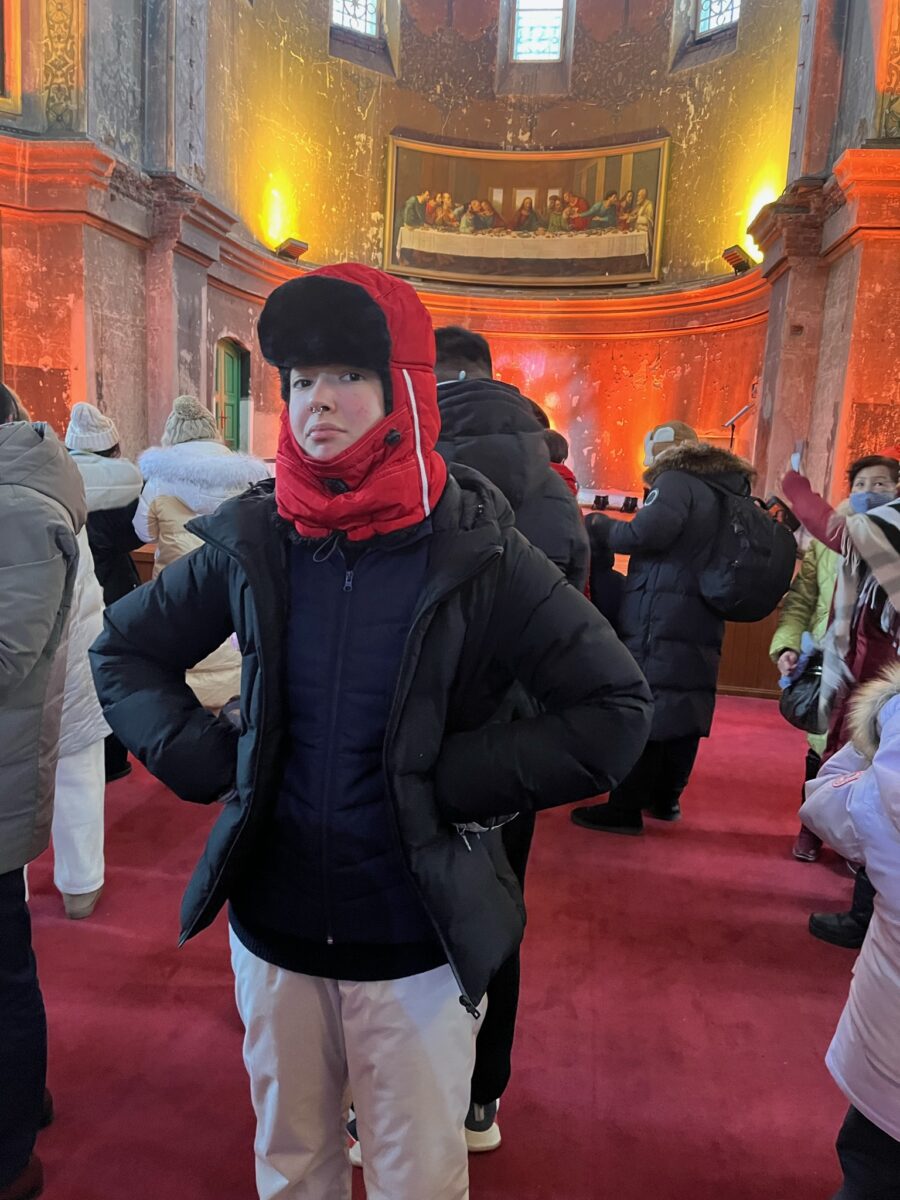
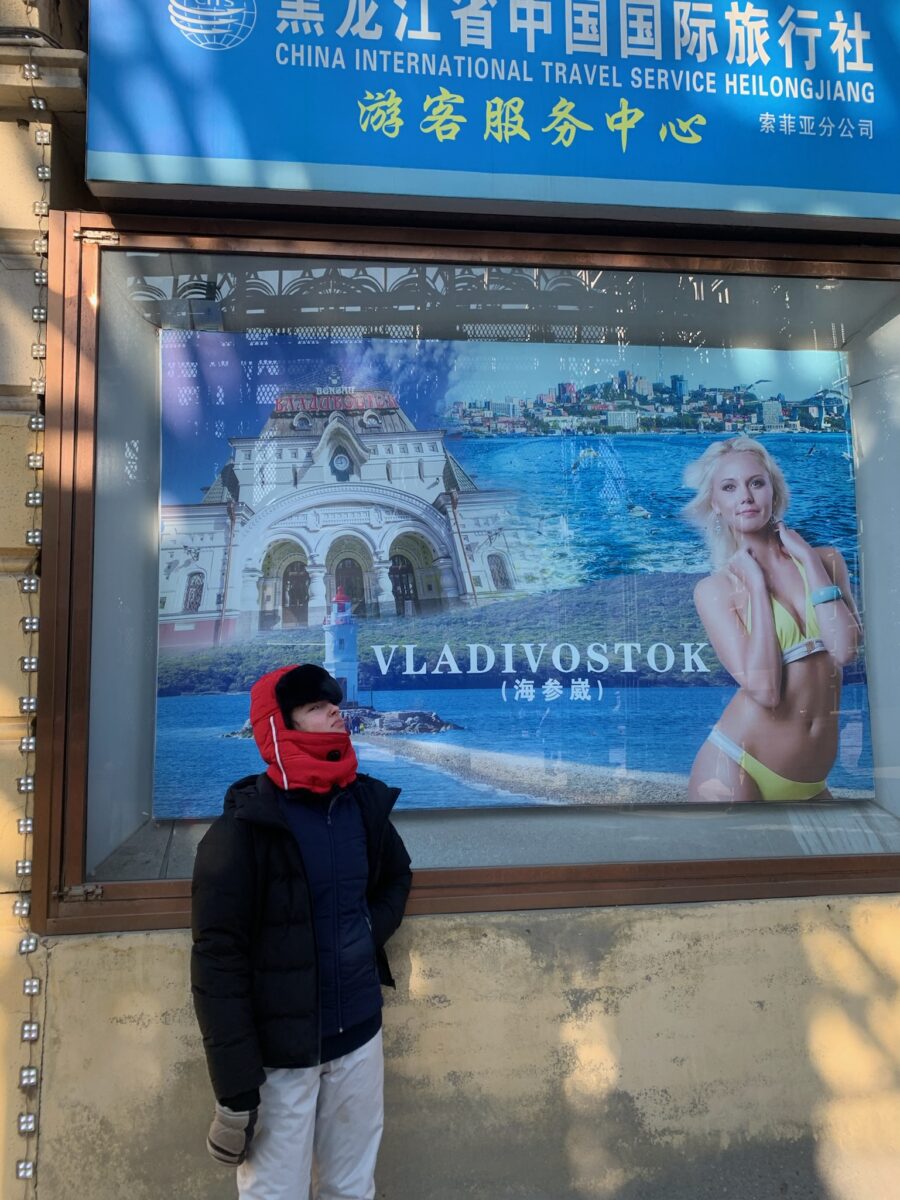
After our walking tour, and failing to find a restaurant I had read about, we went into a random restaurant that looked nice. While we tried to figure out the menu, a young man sitting at the table next to us came to our rescue. He was studying in Australia and was home for the holiday having lunch with his mom. He told us what to order and told us we’d done well falling into this restaurant – it had been in Harbin at least since he was a child.
After lunch we went and packed up our hotel room and headed to the airport and back to Beijing.
Highlights of this week: Celia celebrated her big “Halfway Lunch” – half way through senior year. The parents go over the top with it – spending hours decorating. The seniors are applauded on their way in, then special food and fantastic deserts, a slide show and a photo area.
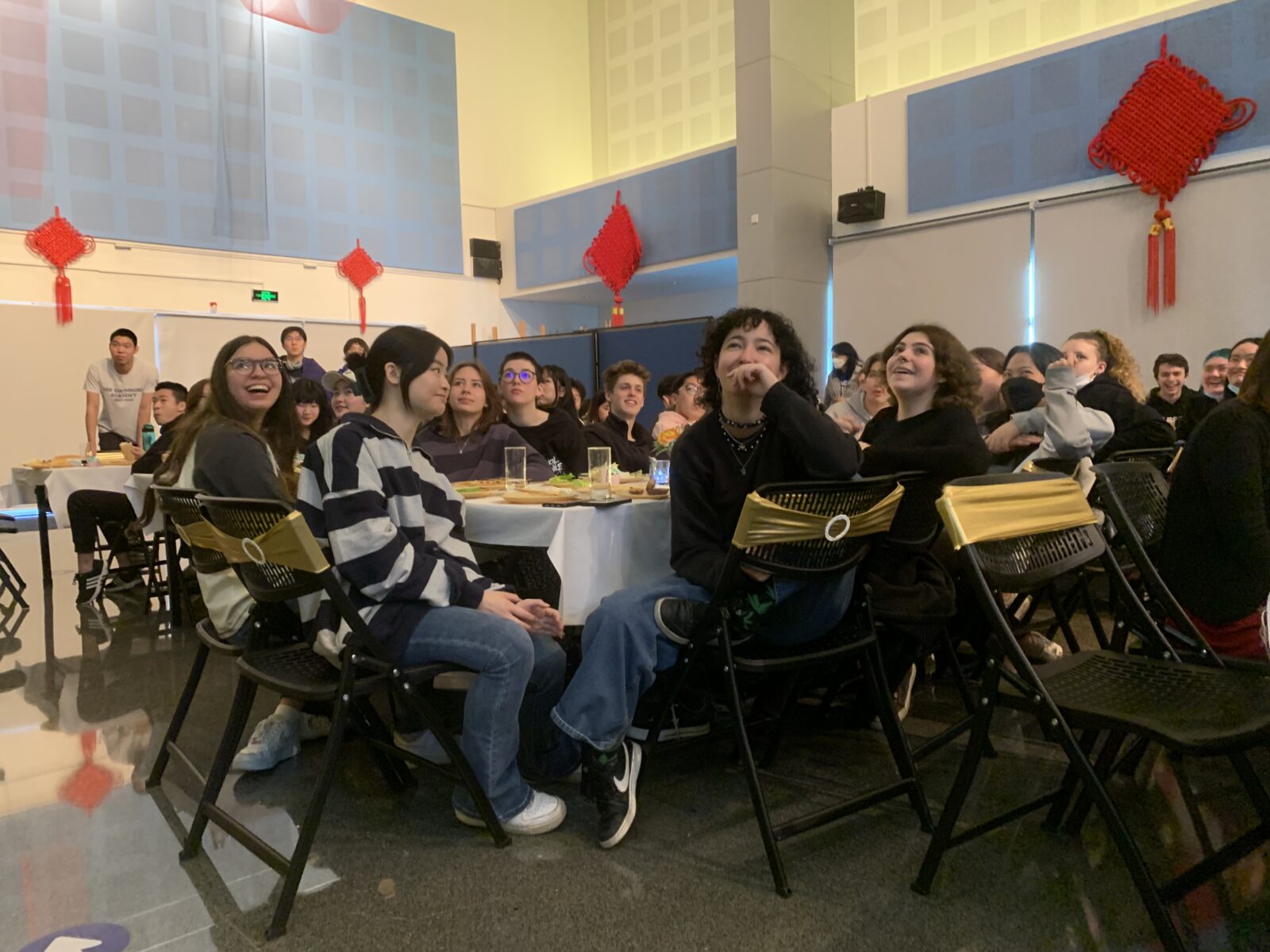
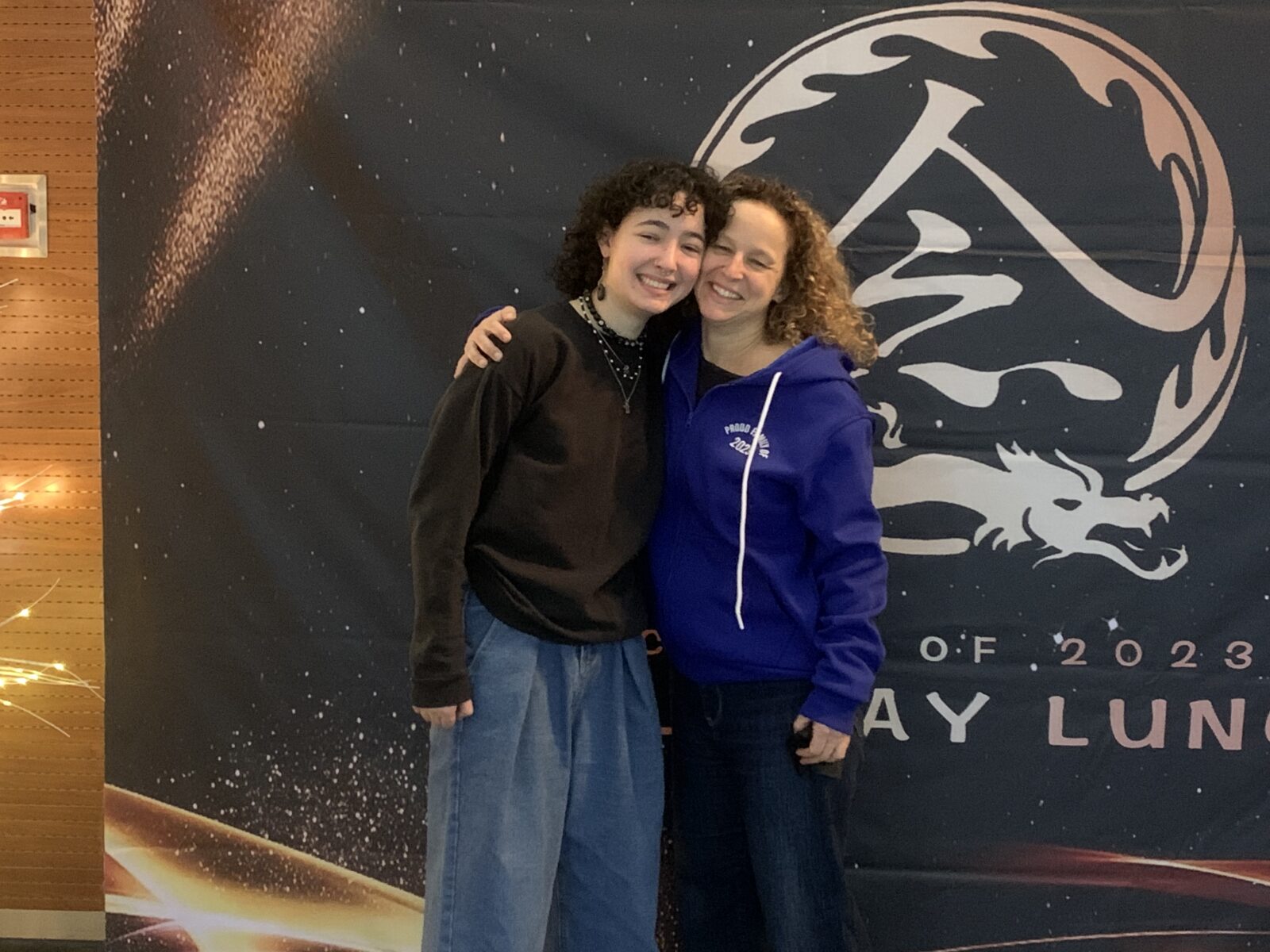
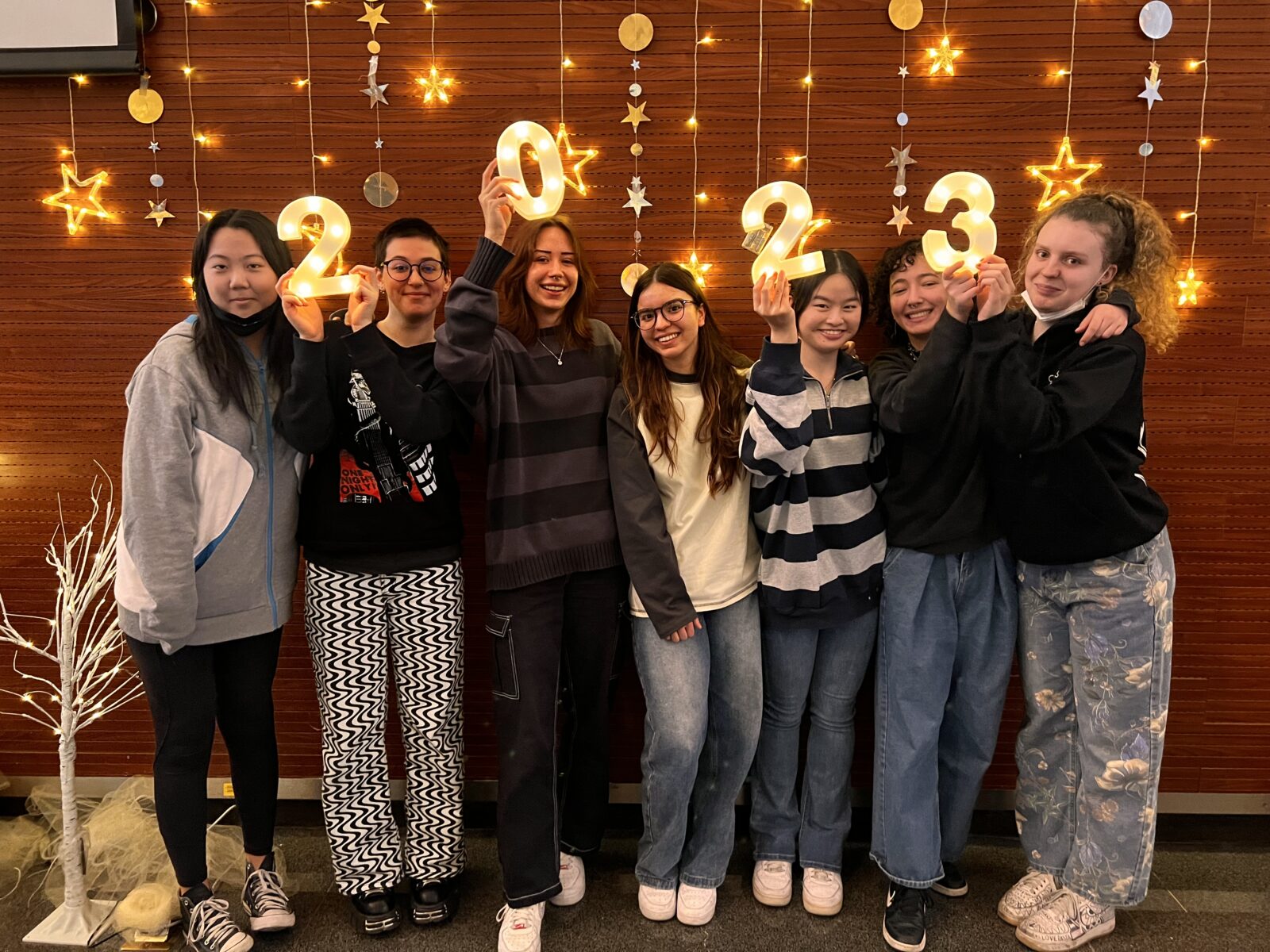
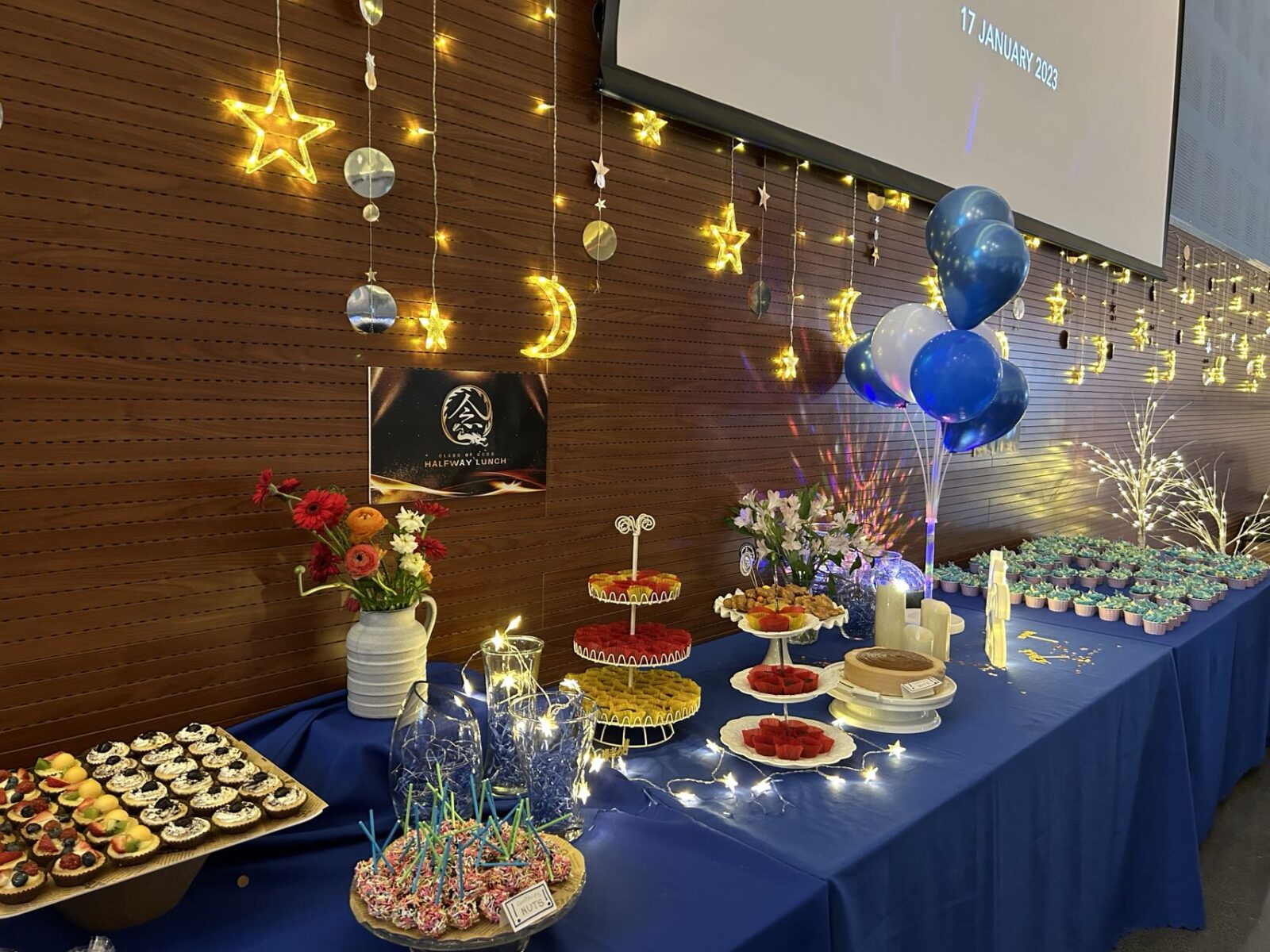
Dan had a big meeting with a higher up in the government and was given the opportunity to spend a few extra days being quarantined in a hotel – locked in his room, eating lovely food that is left at his door in plastic containers.
I was invited to a hot pot restaurant with a really interesting group of women. We all wore red in honor of the new year.
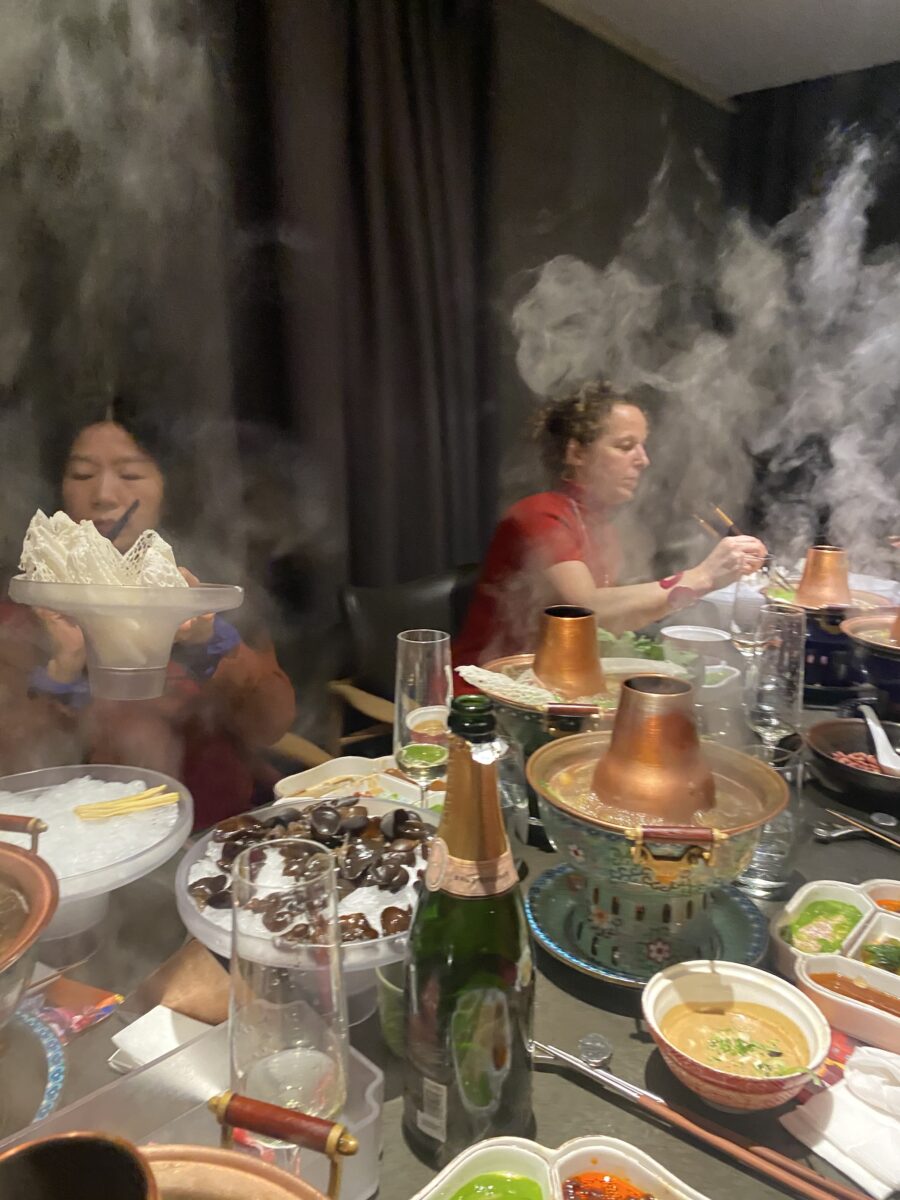
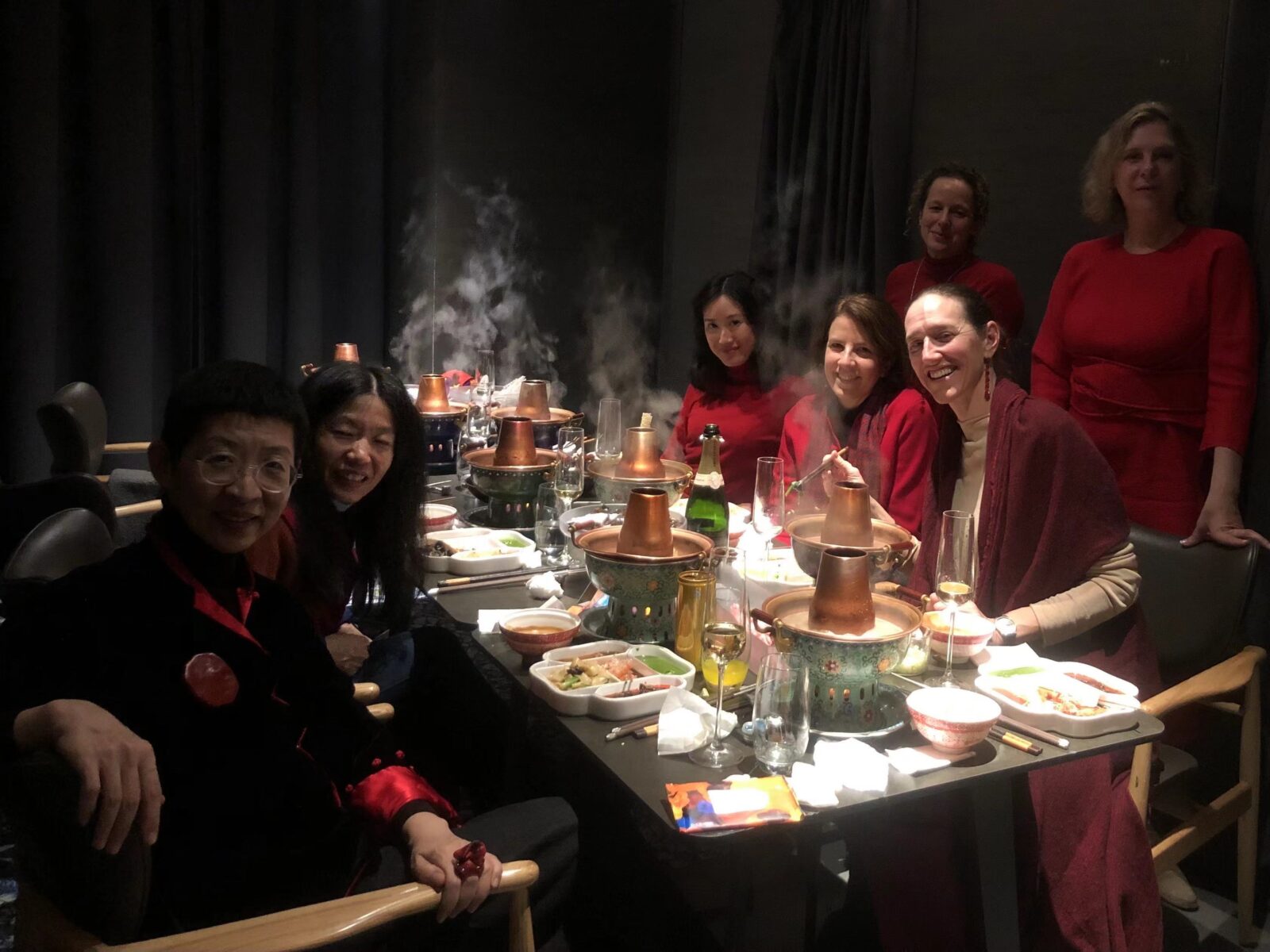
Dan finally was released to his meeting and then was able to make the New Years Celebration at school.
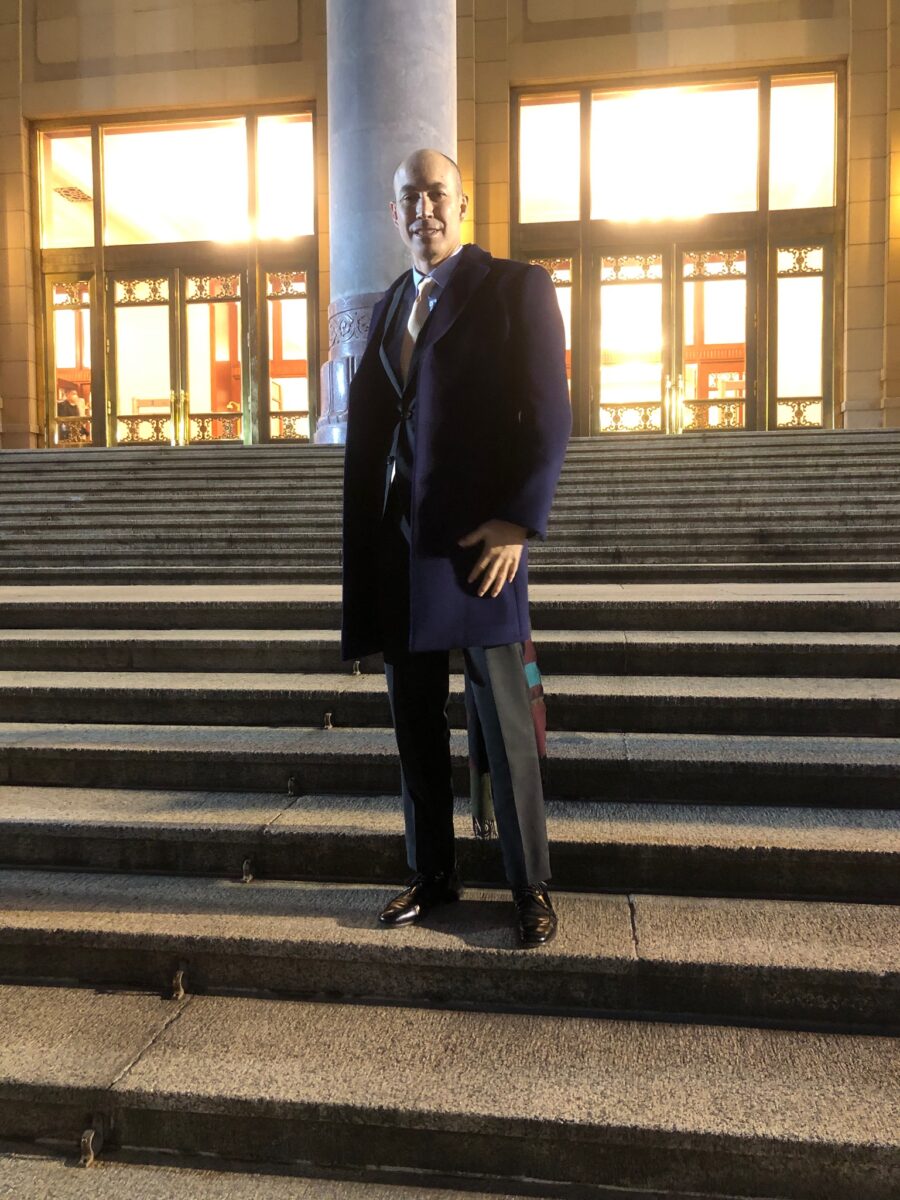
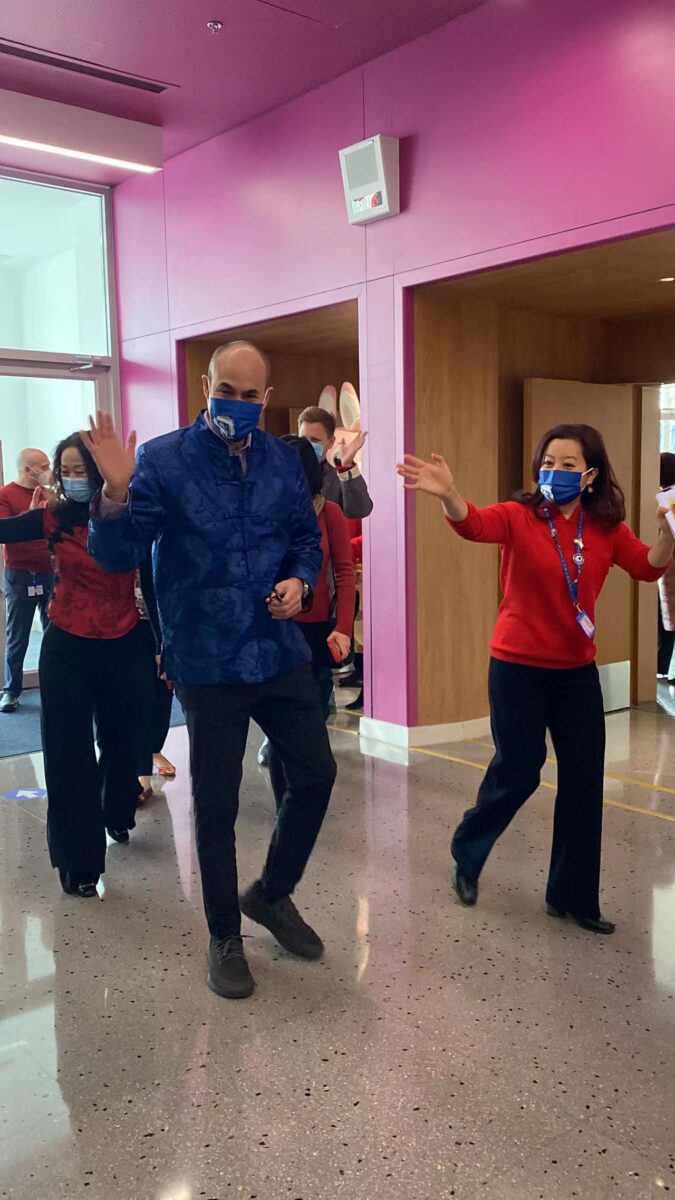
This evening marks the beginning of ChunJie (the Spring Festival). Everyone in China goes to their home town to celebrate the New Year with their families. At the moment we plan to stay put, having some quiet time. Possibly we’ll do some exploring – once we recover from this last trip. I’ll let you know!